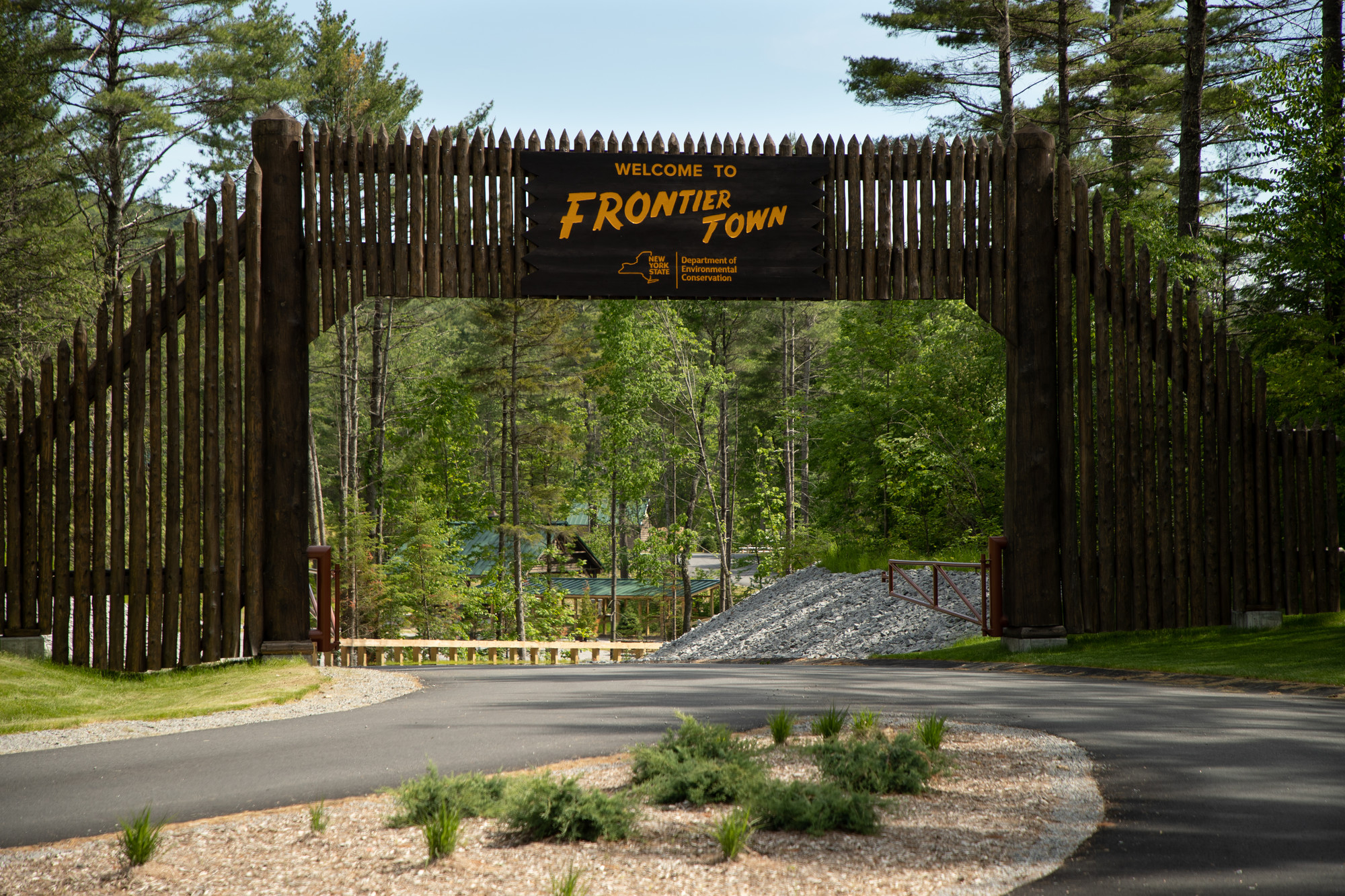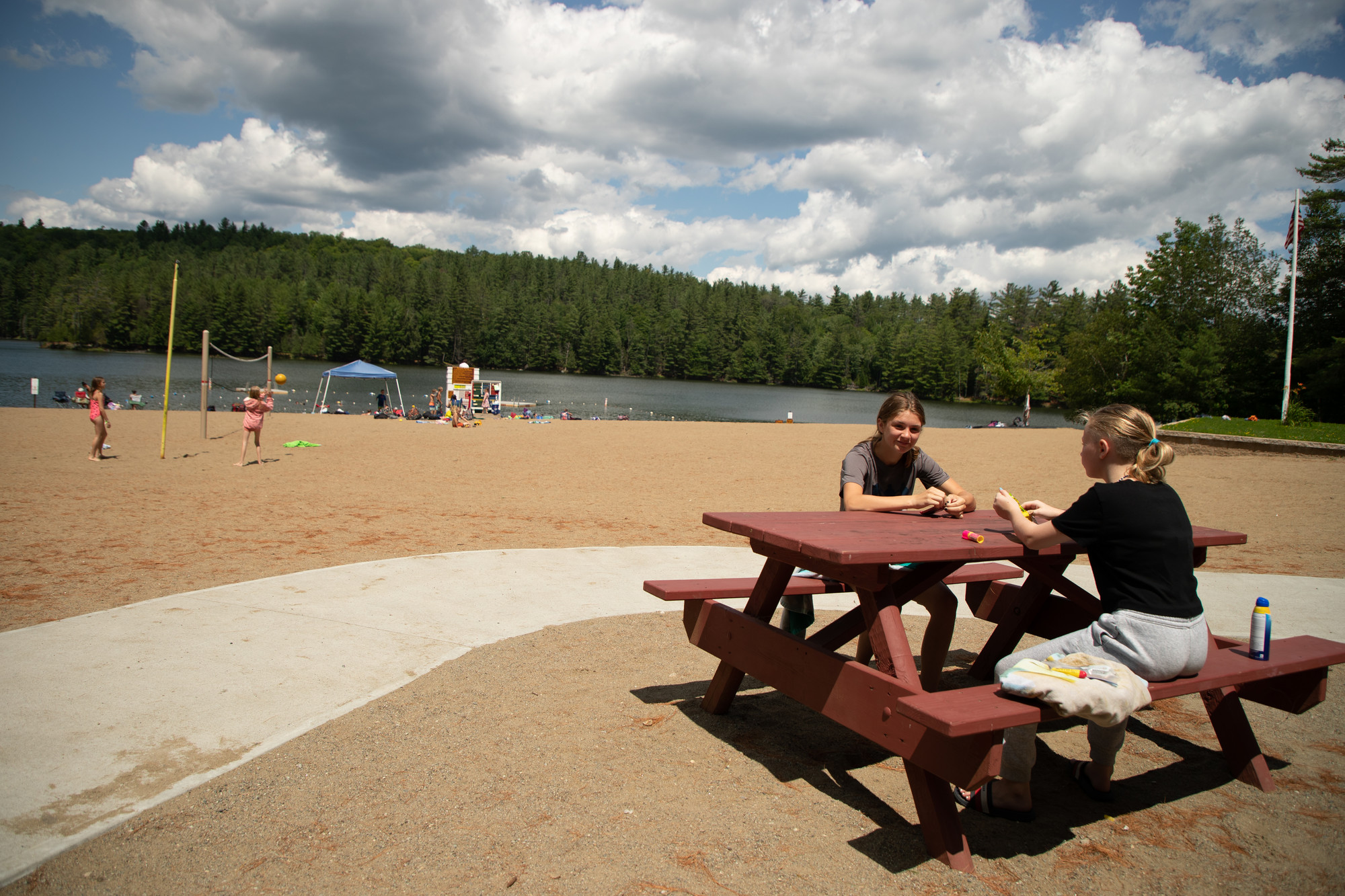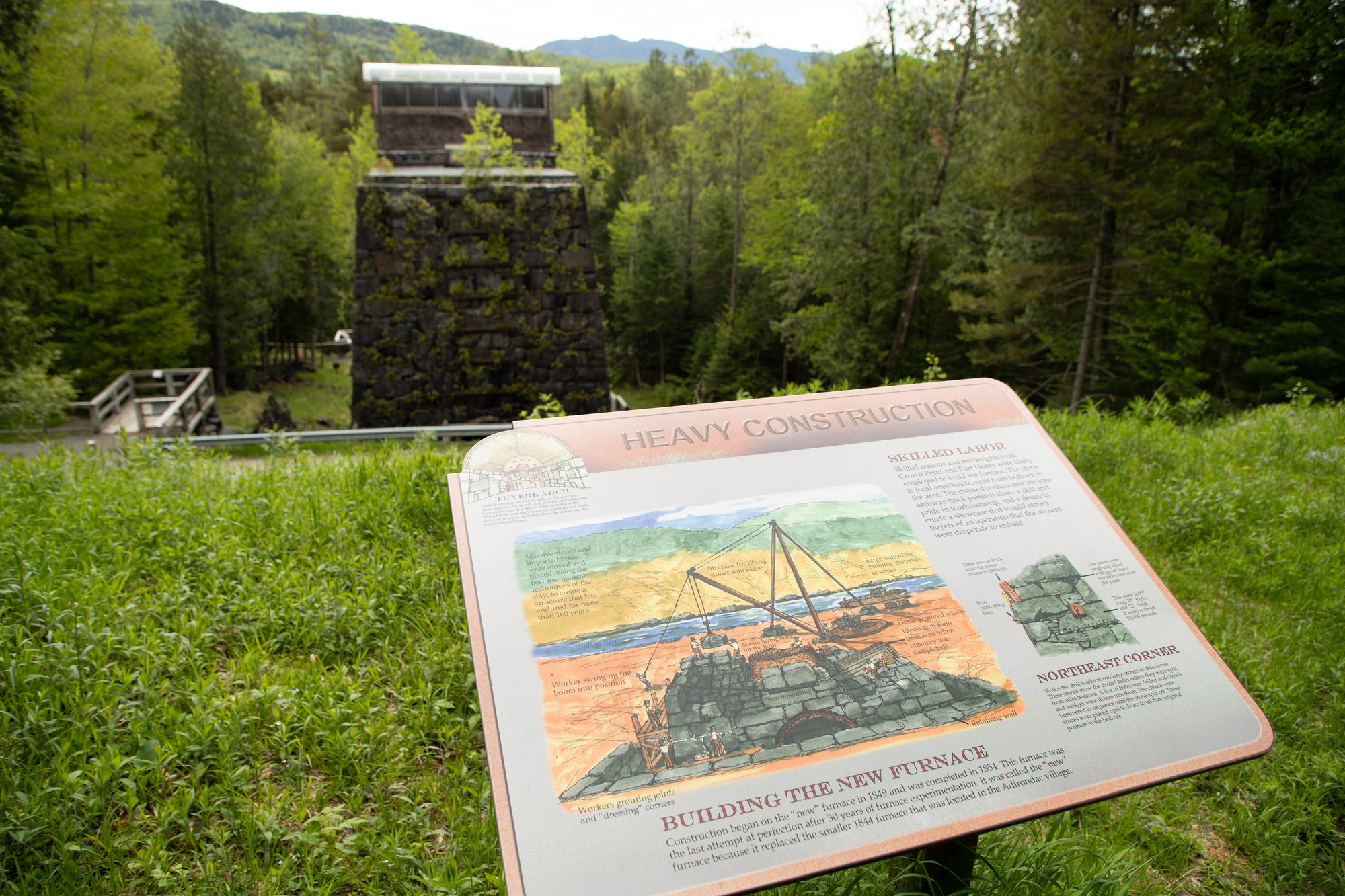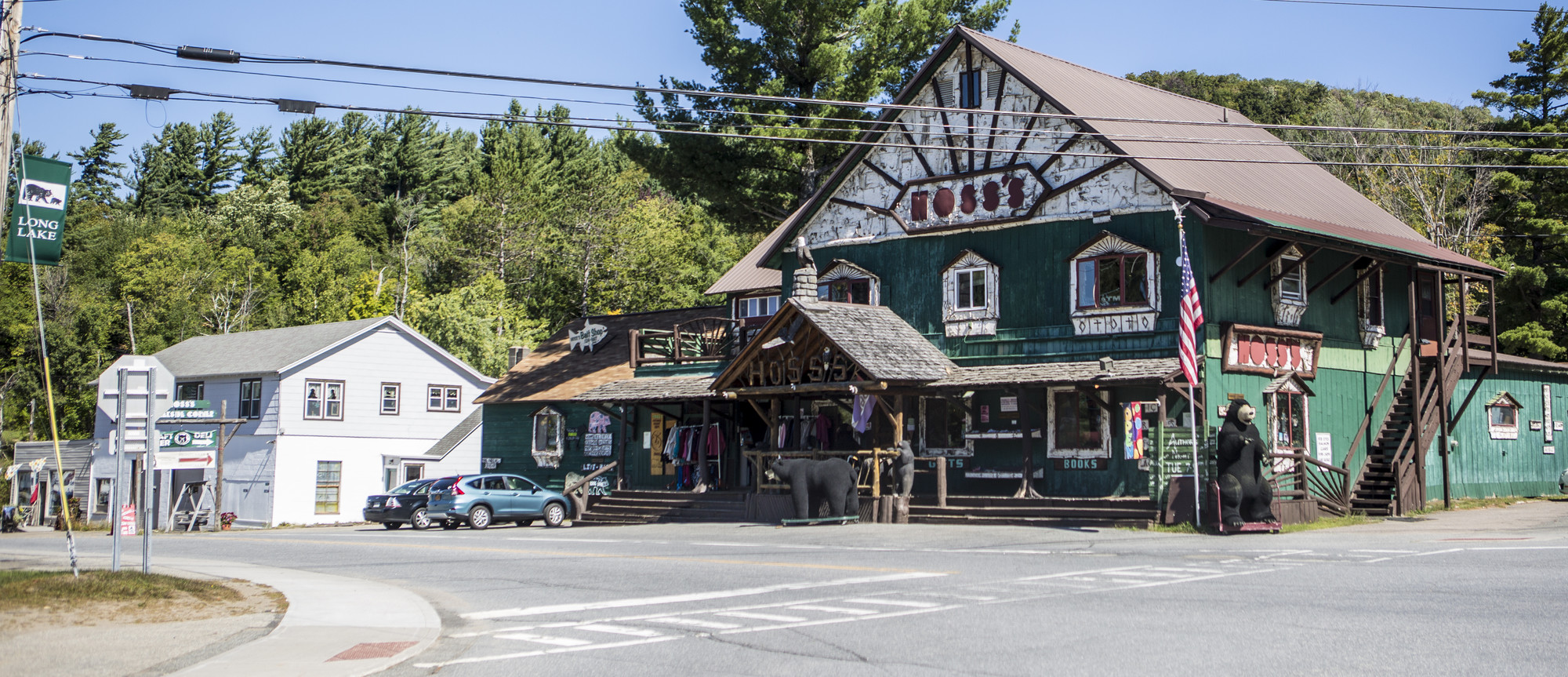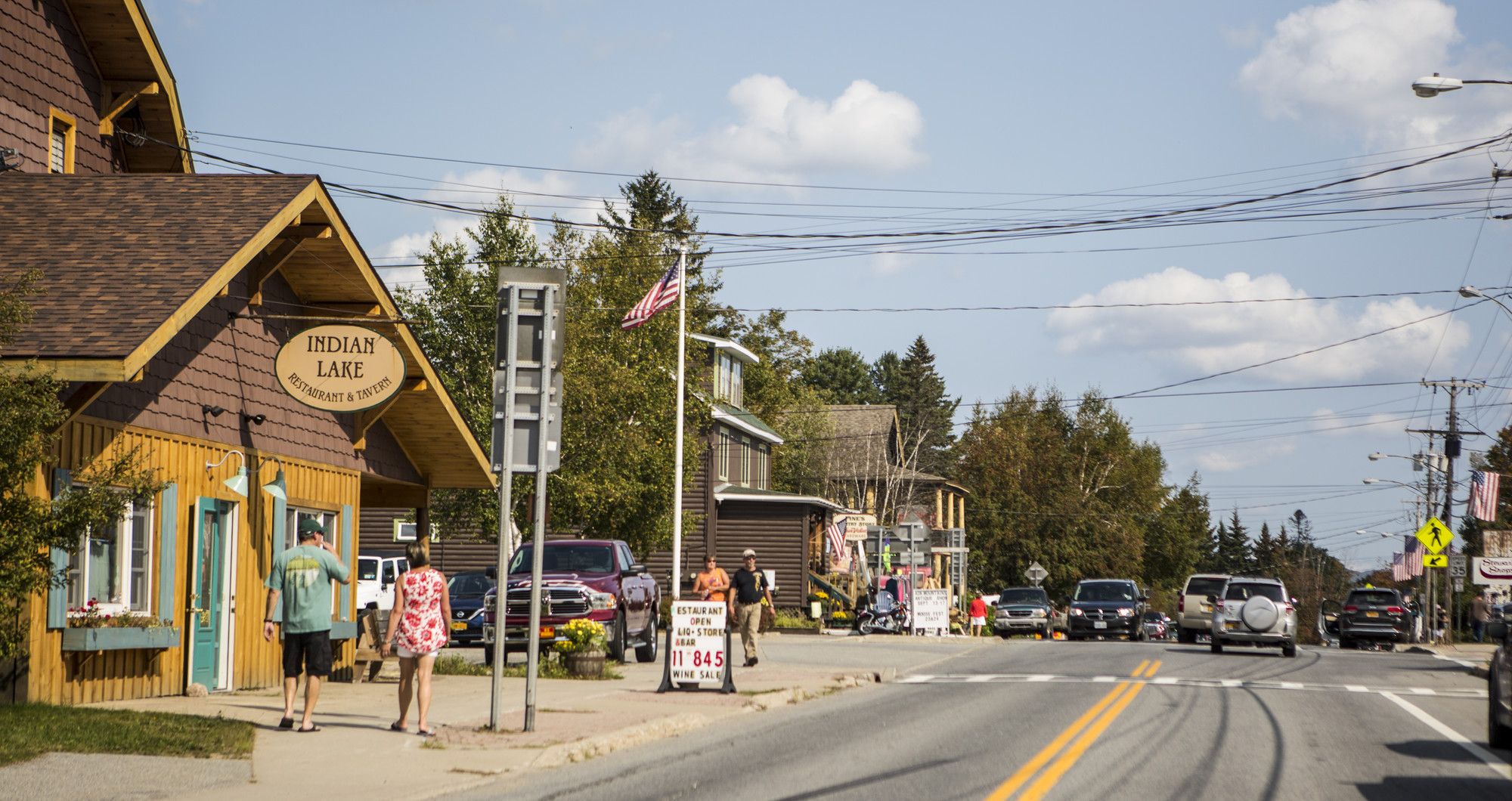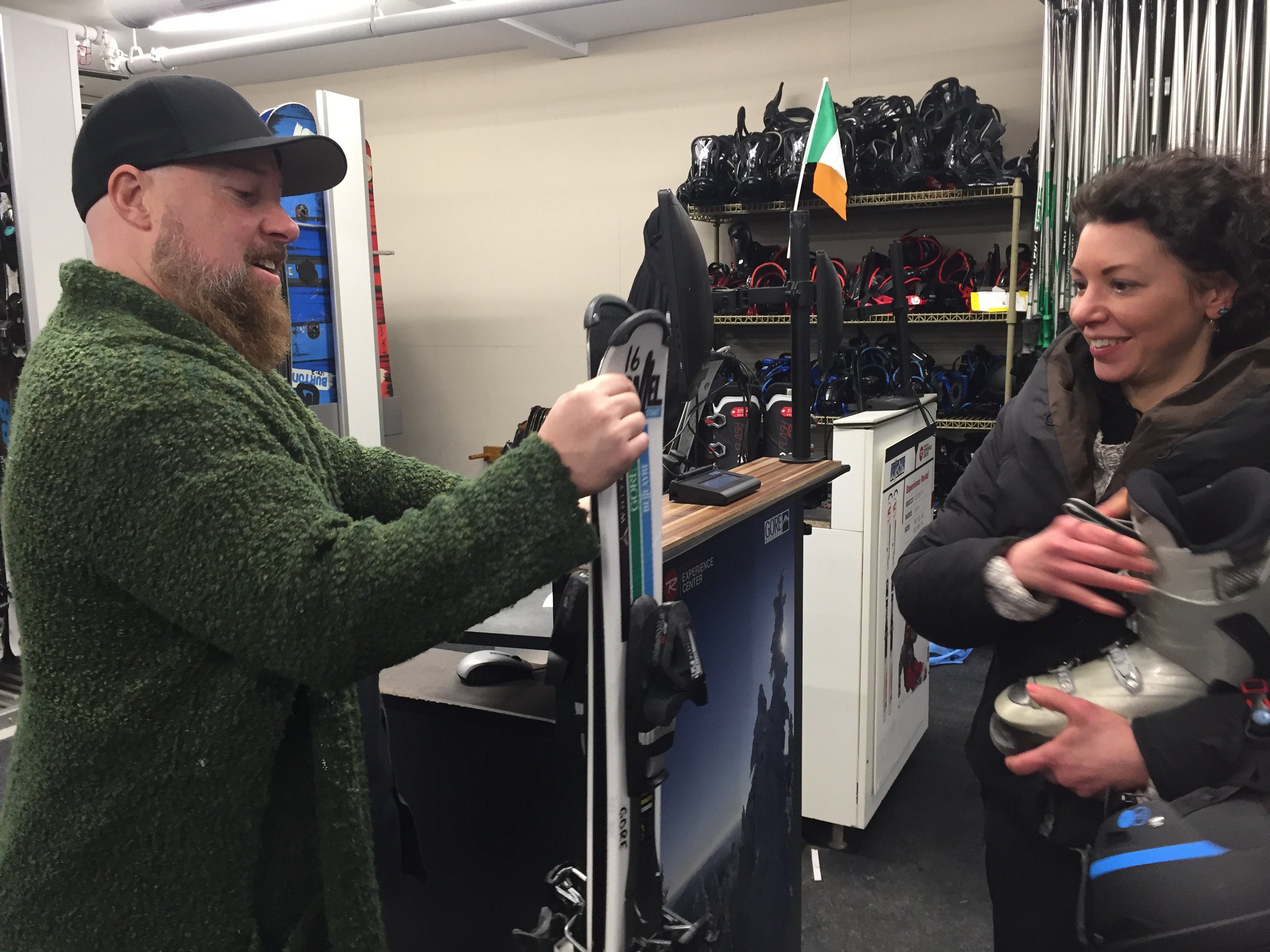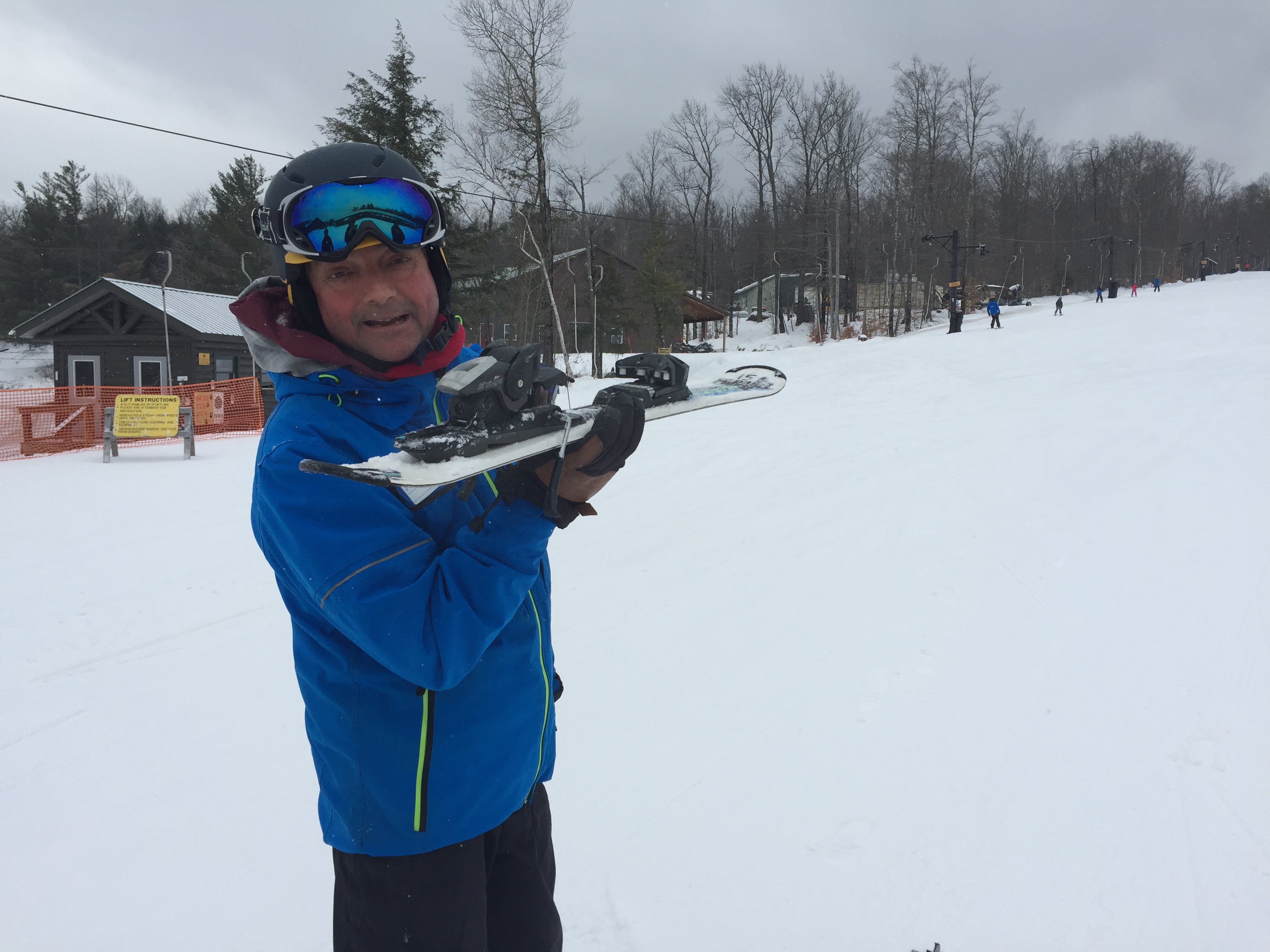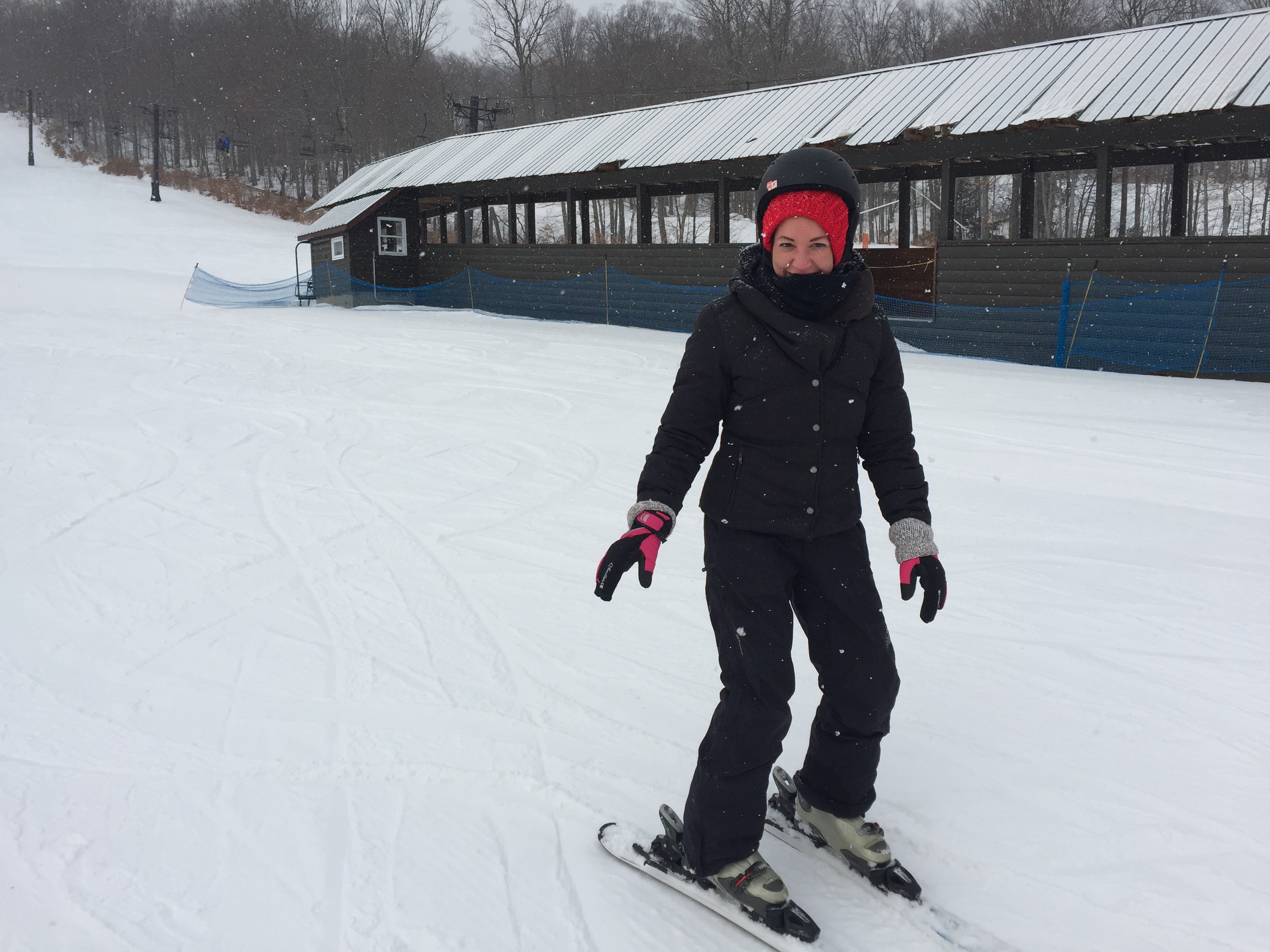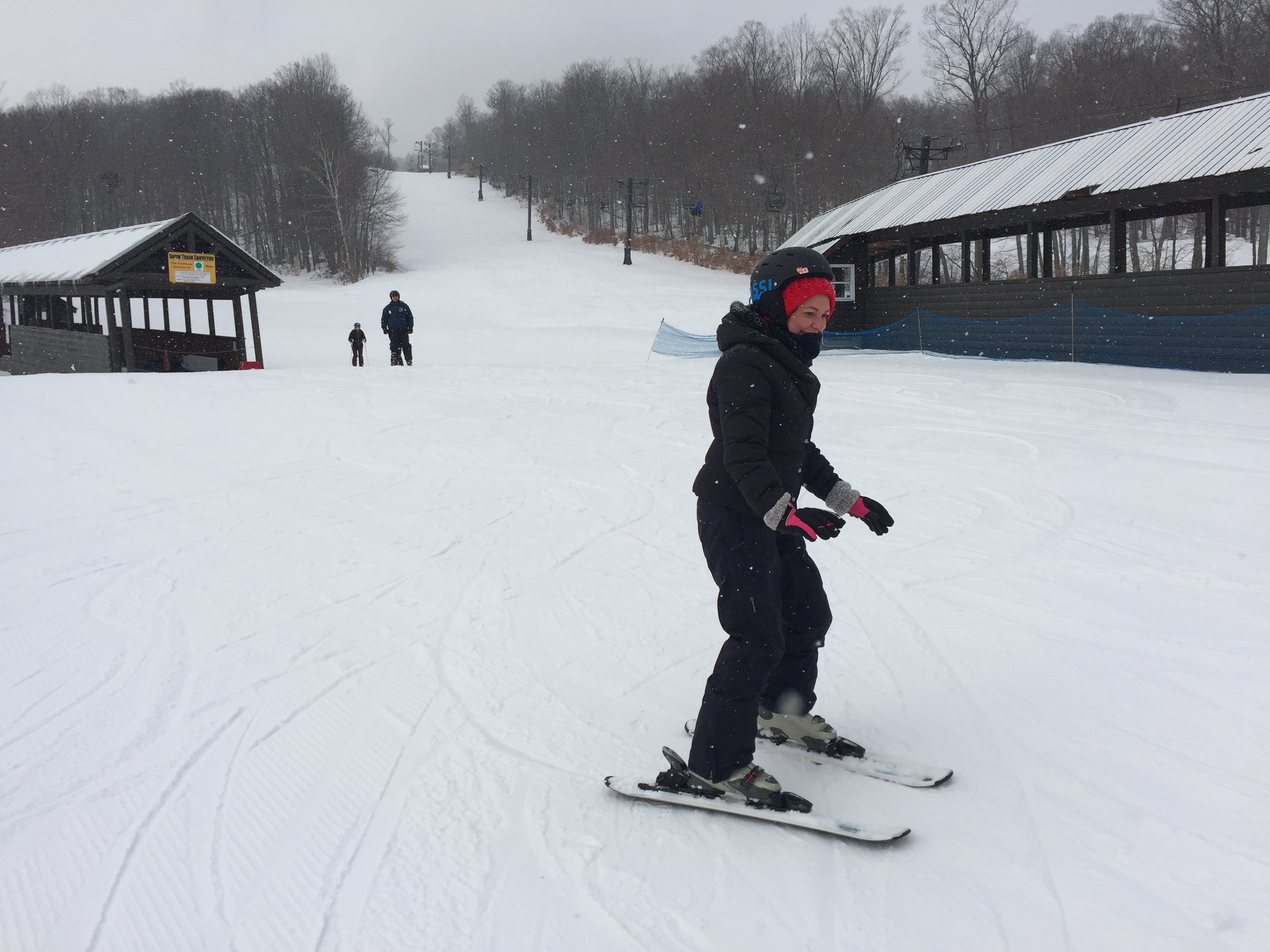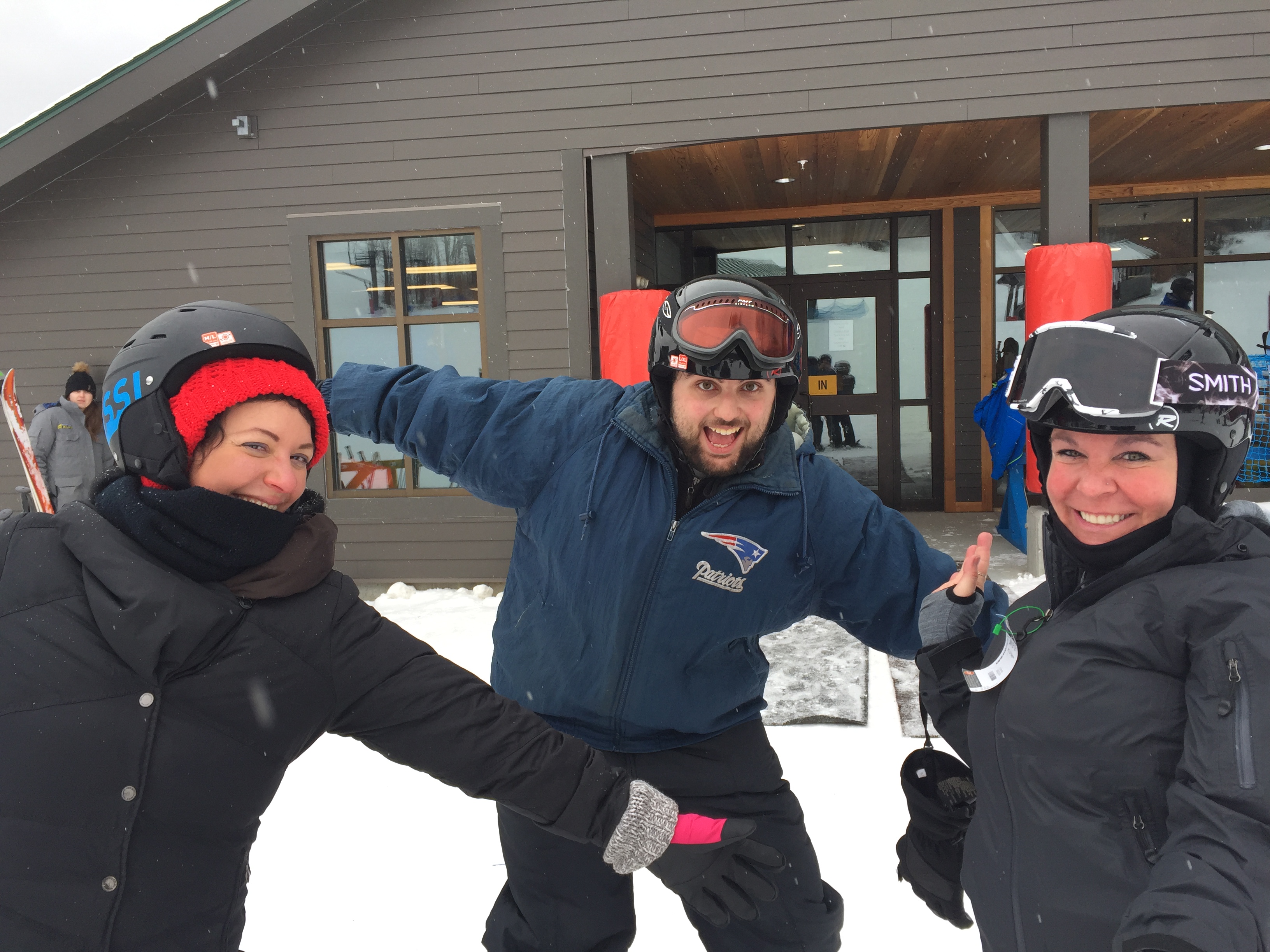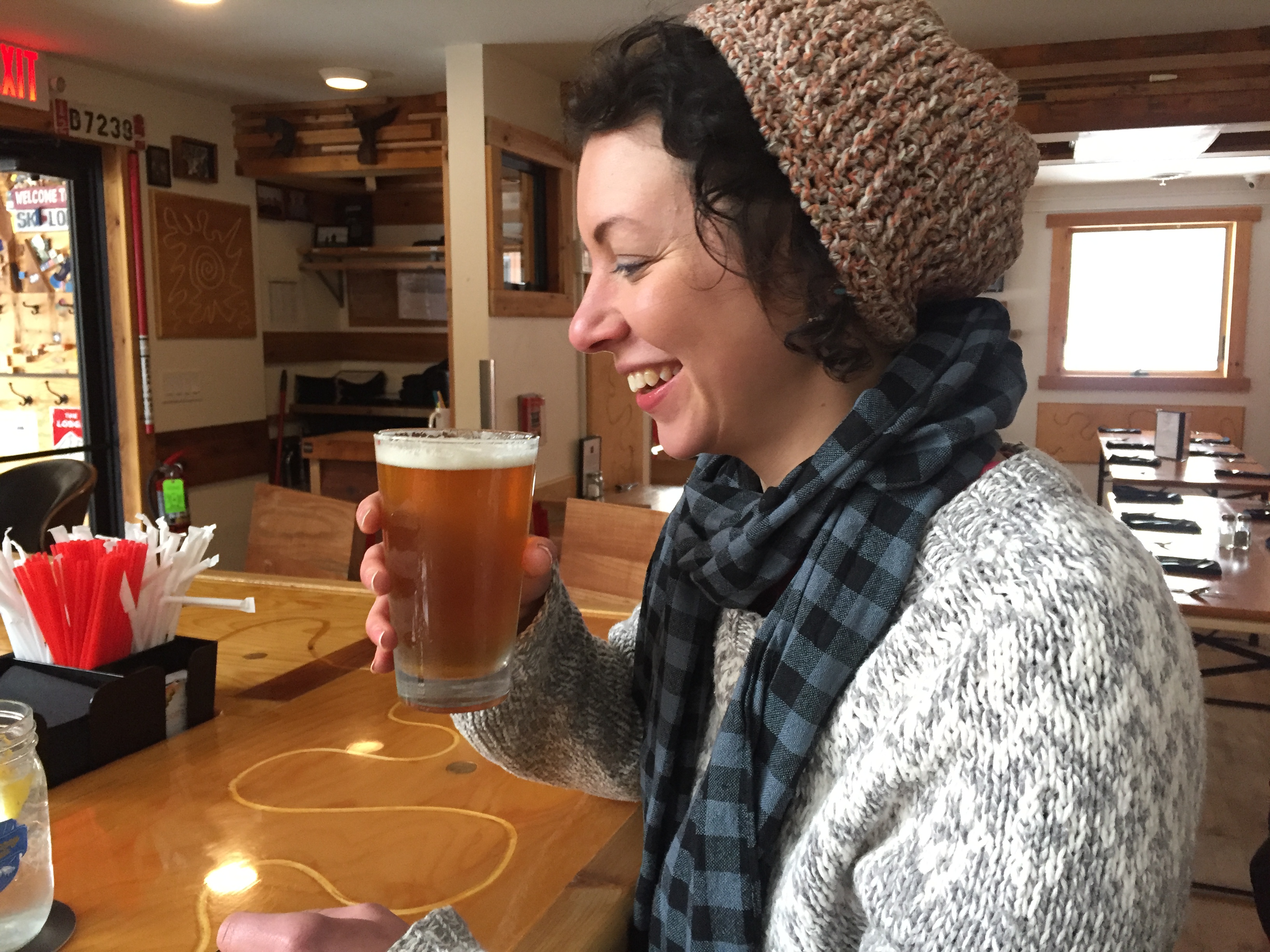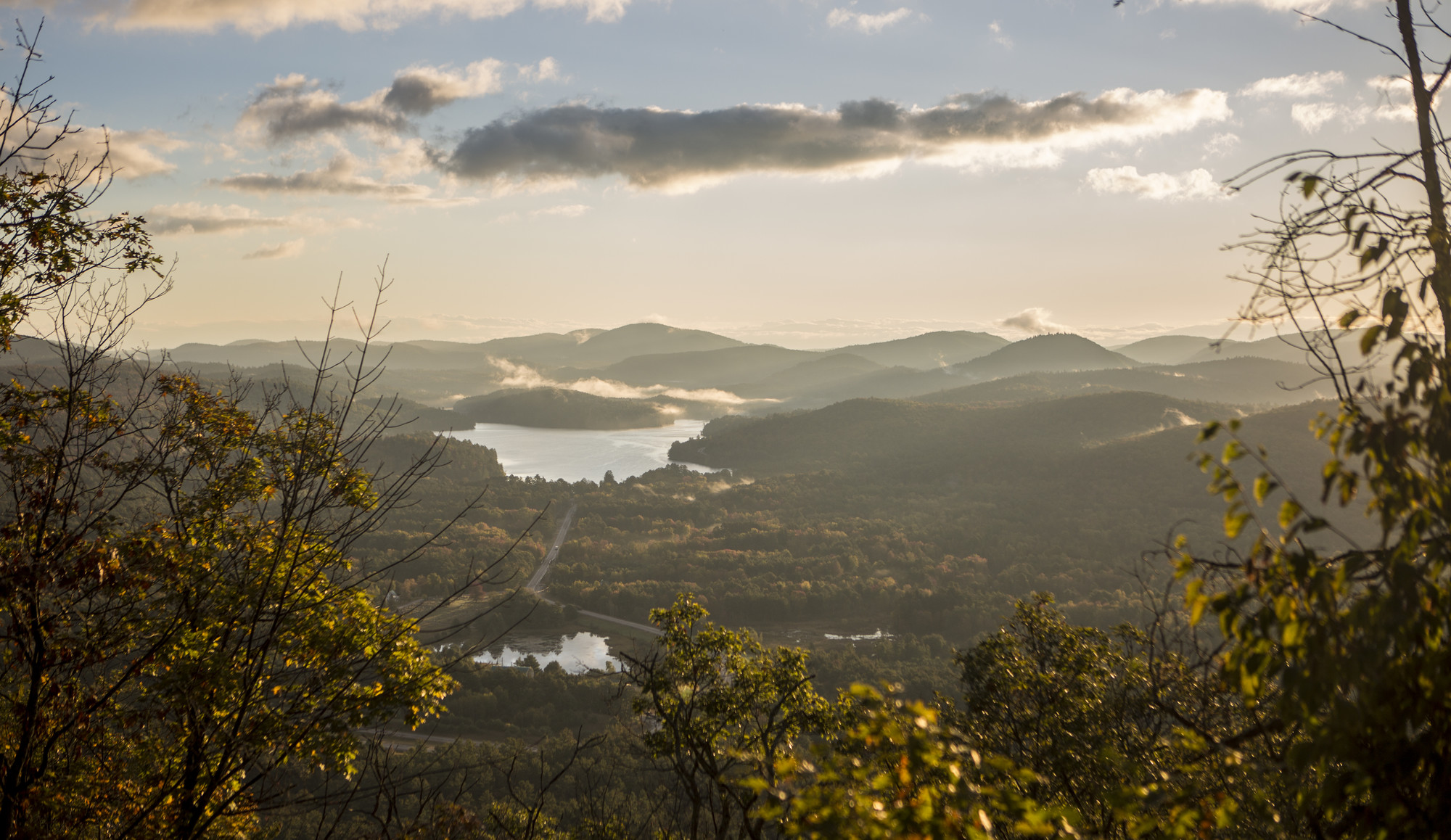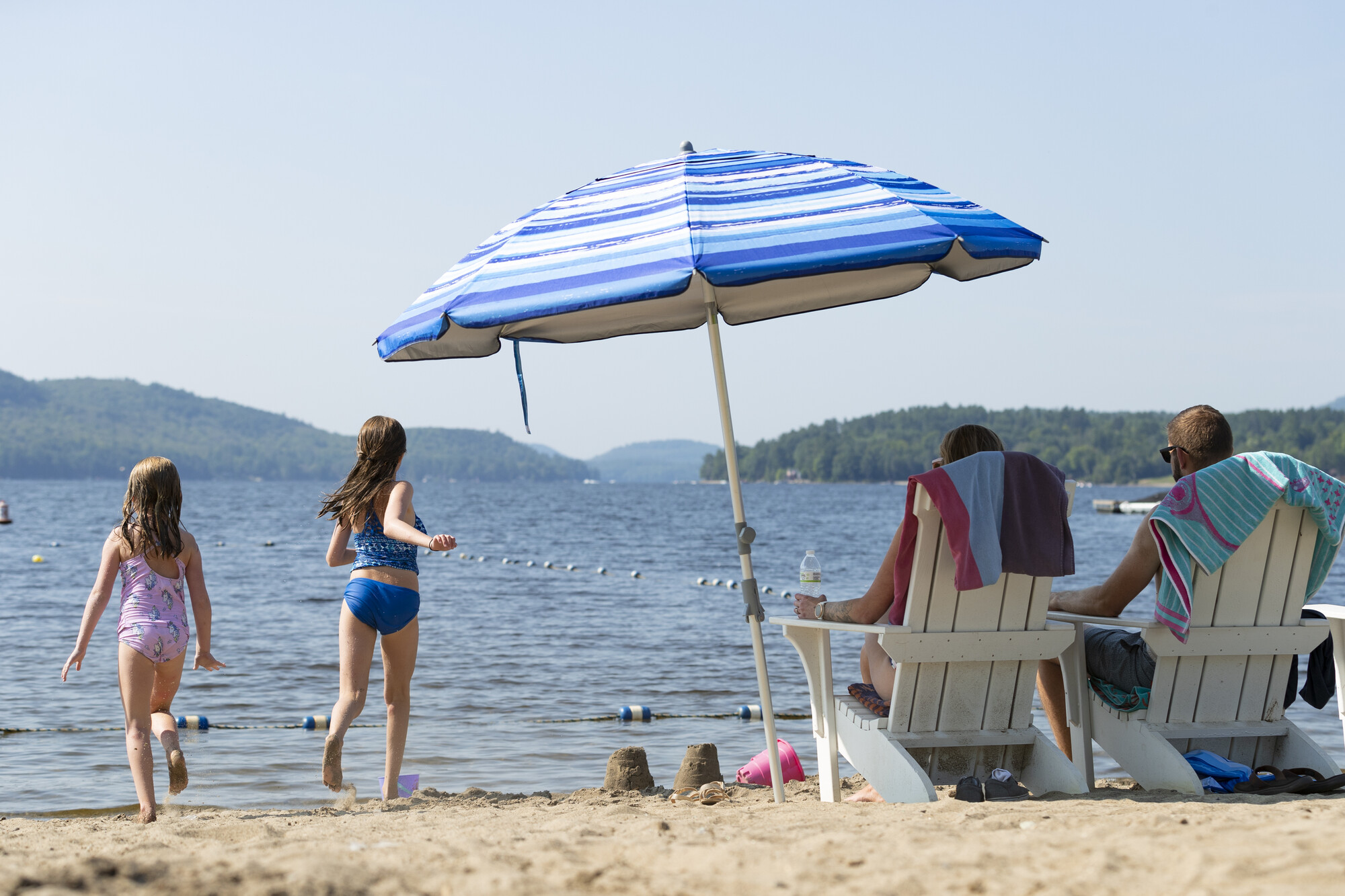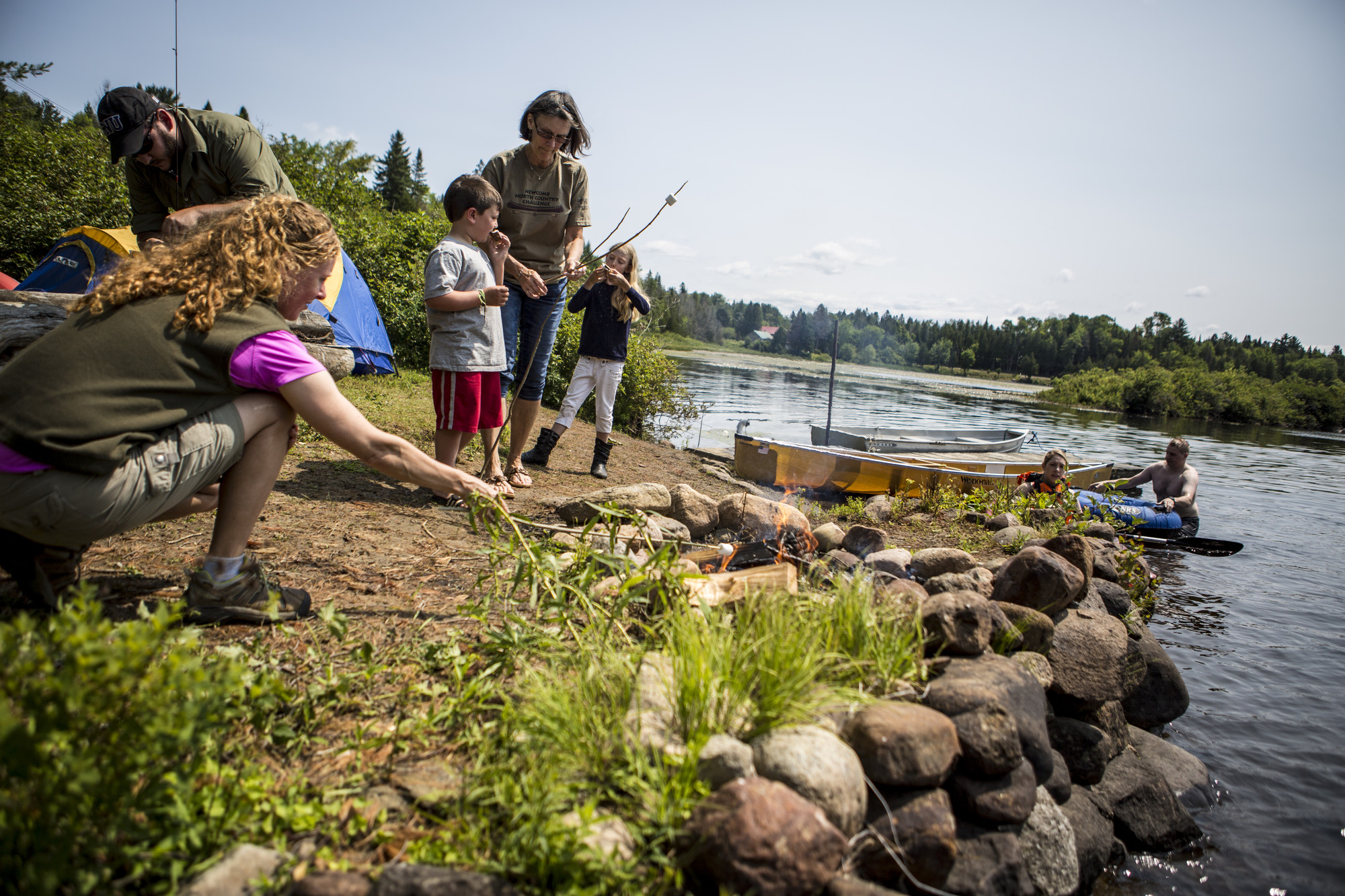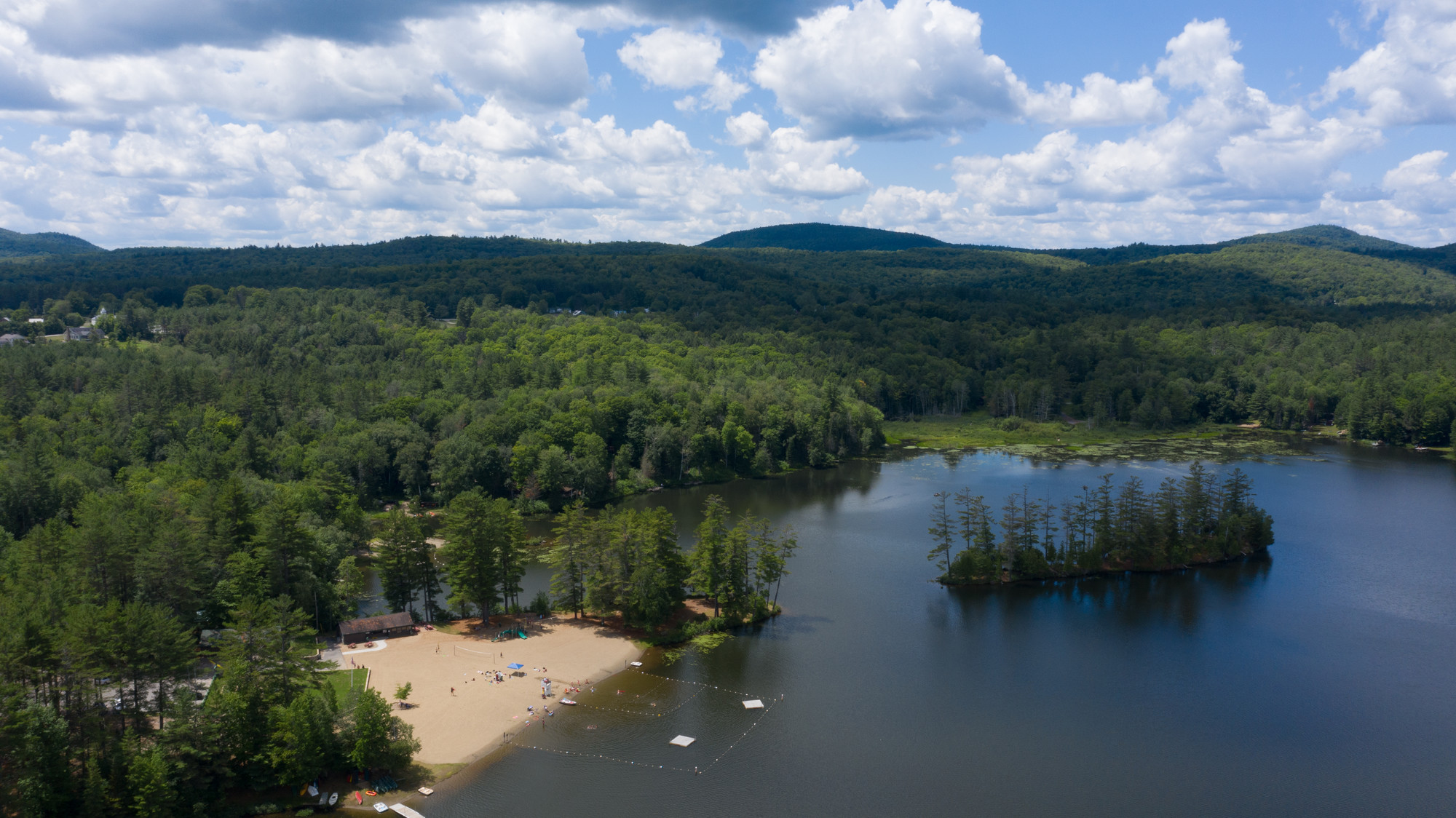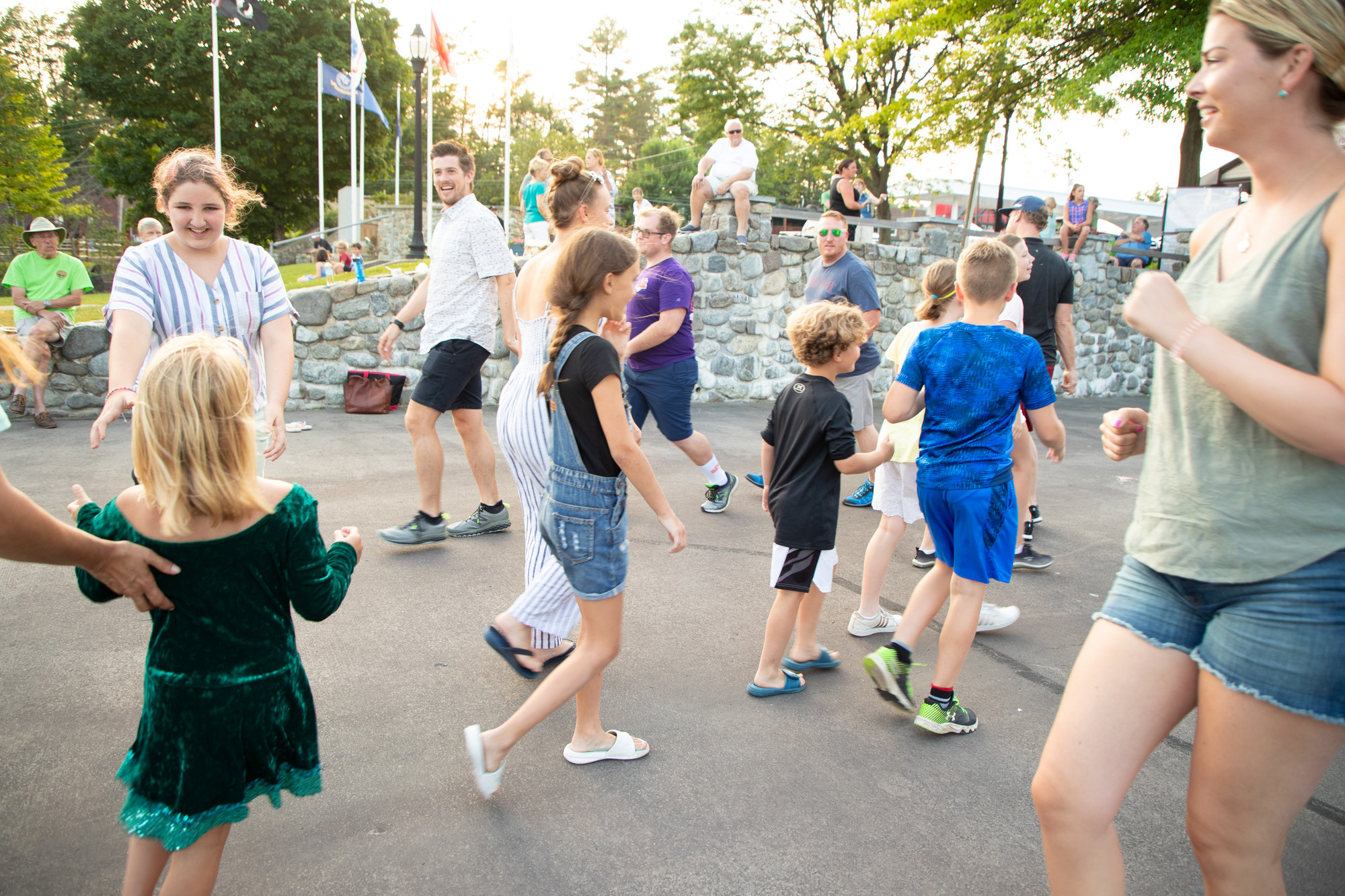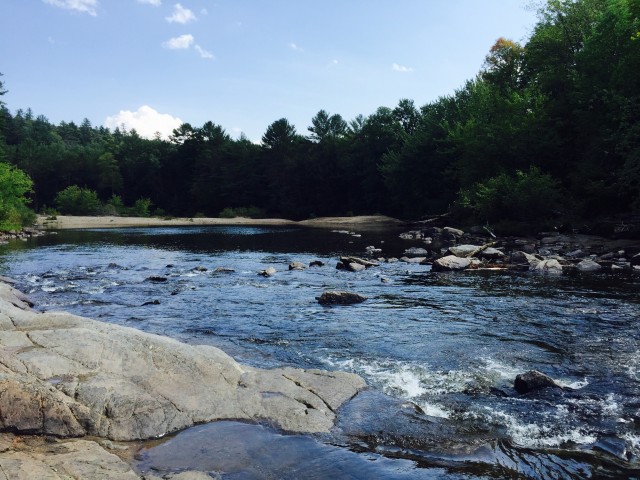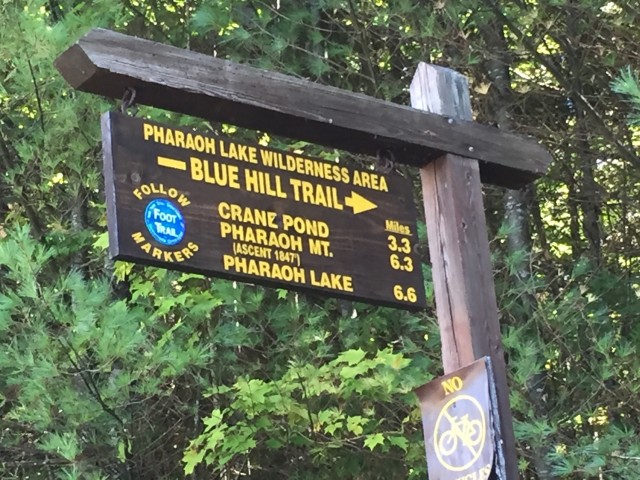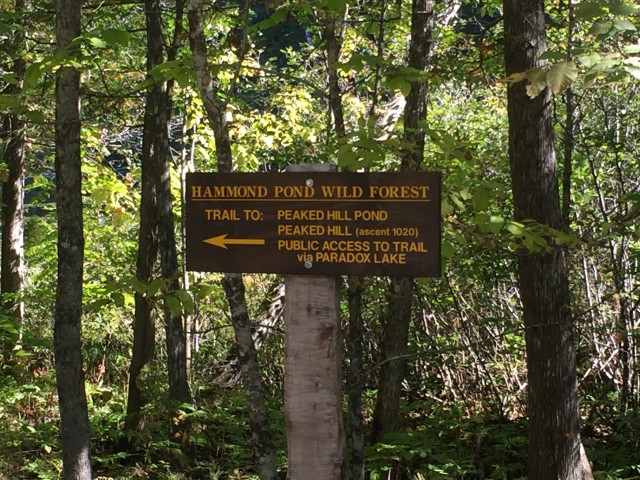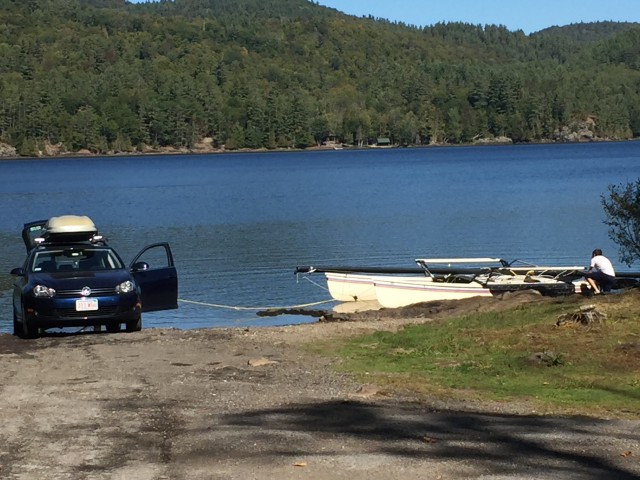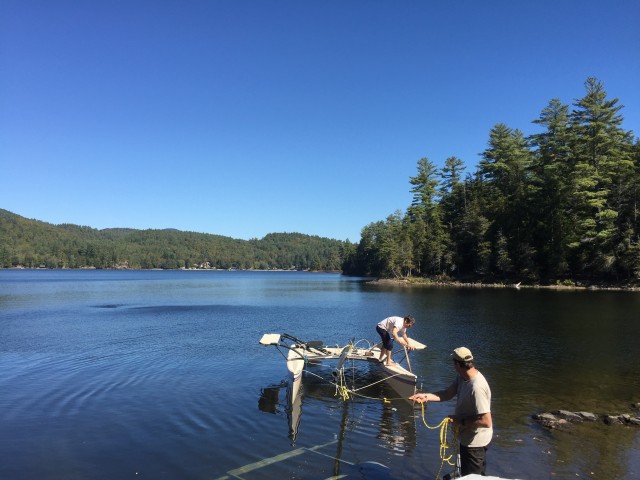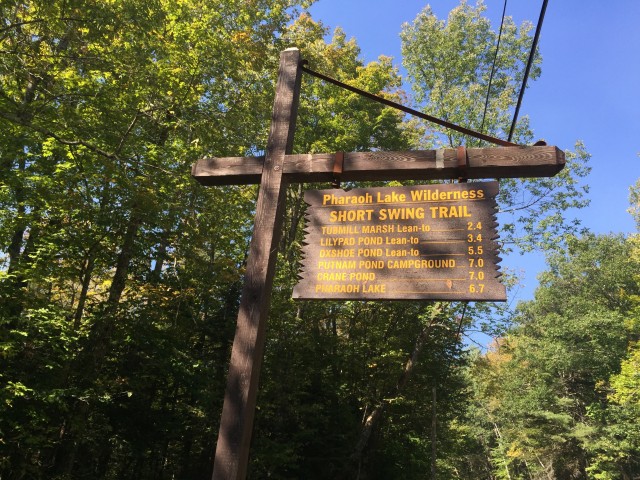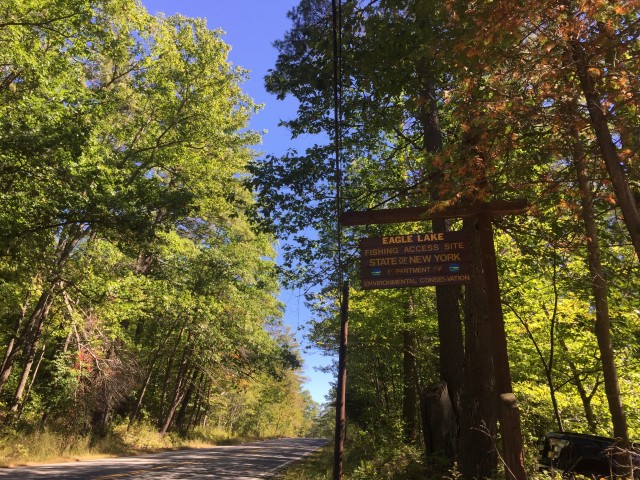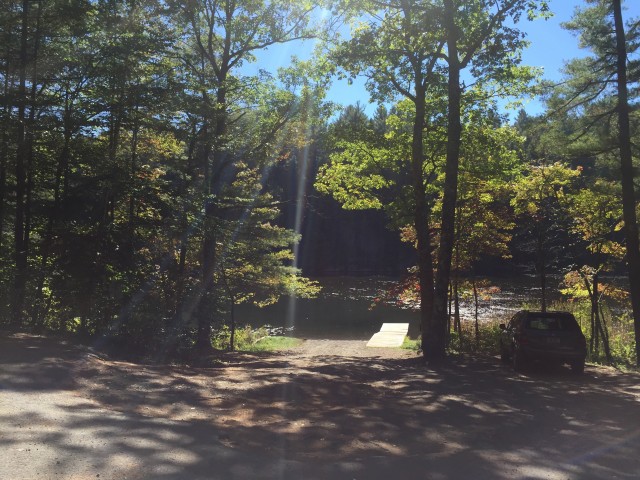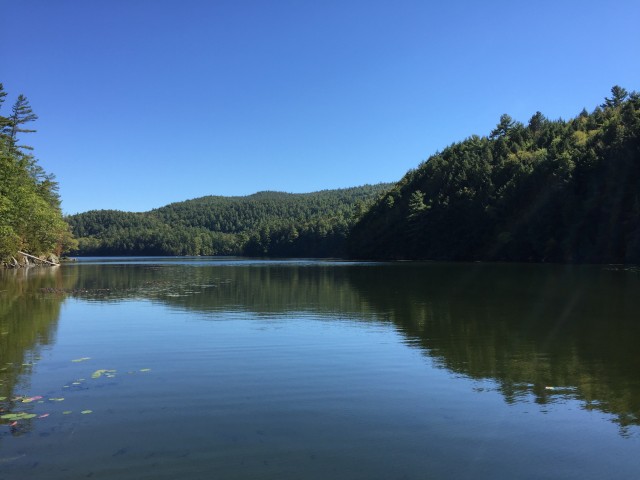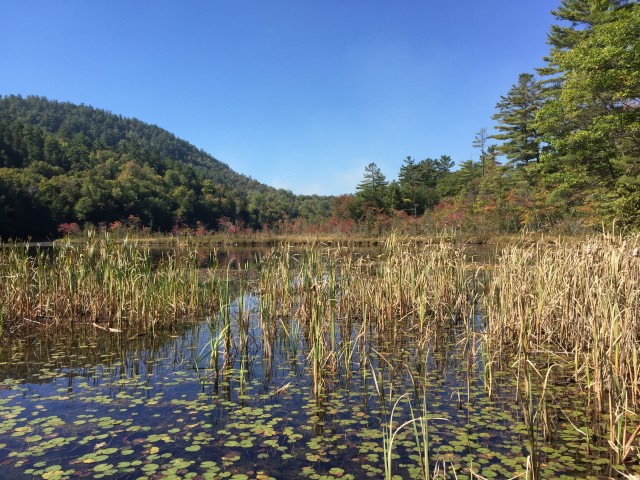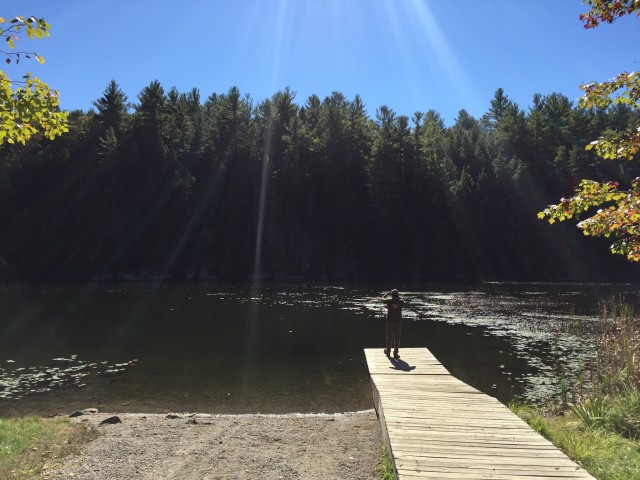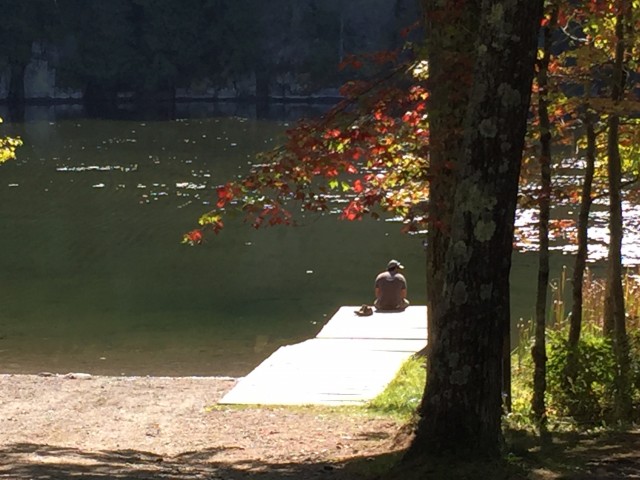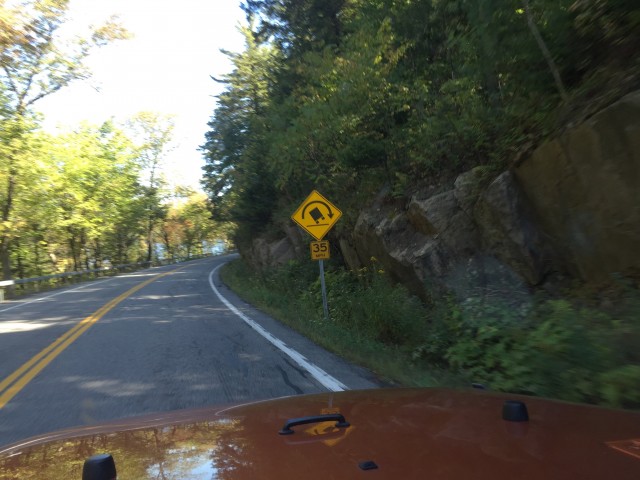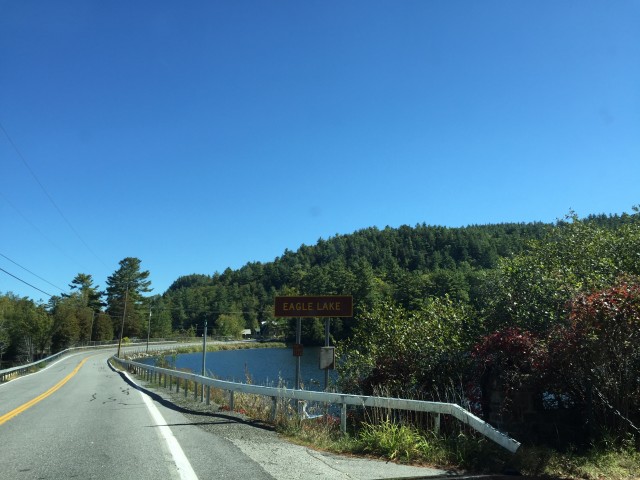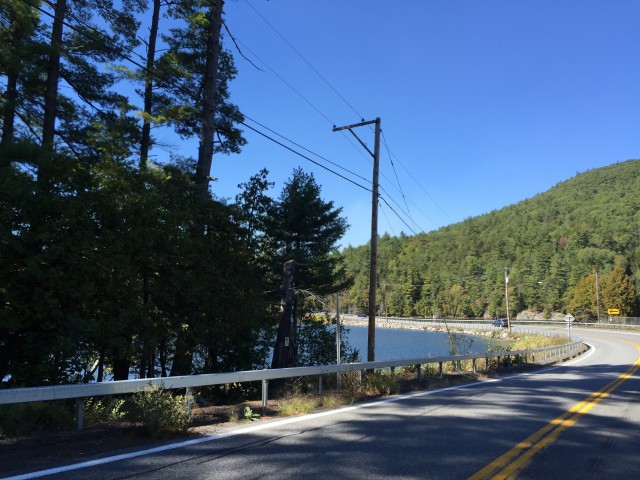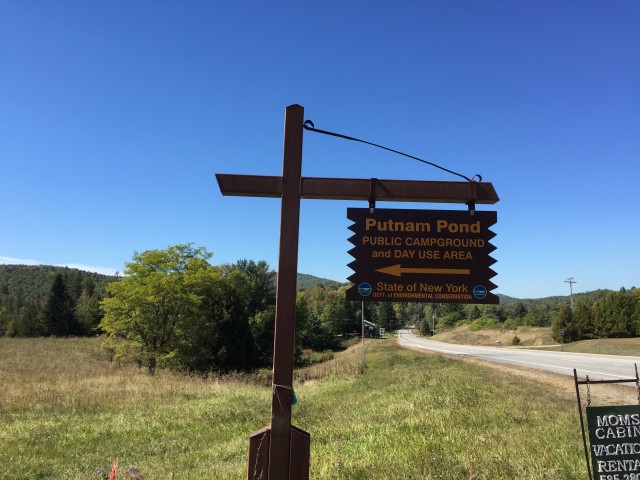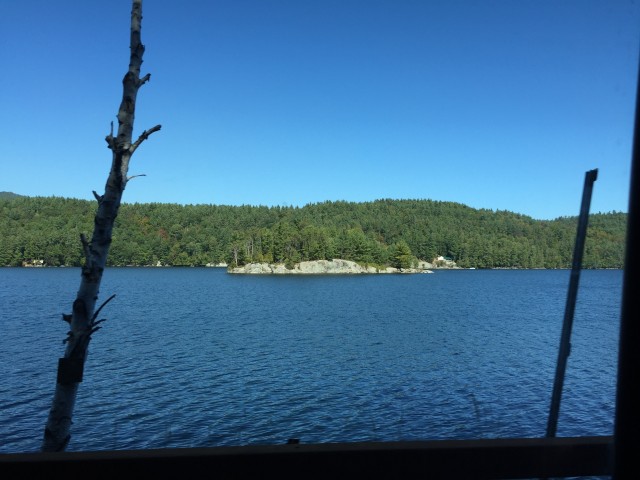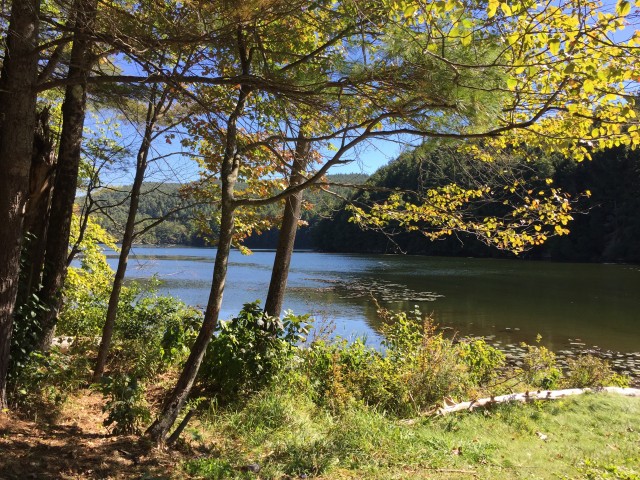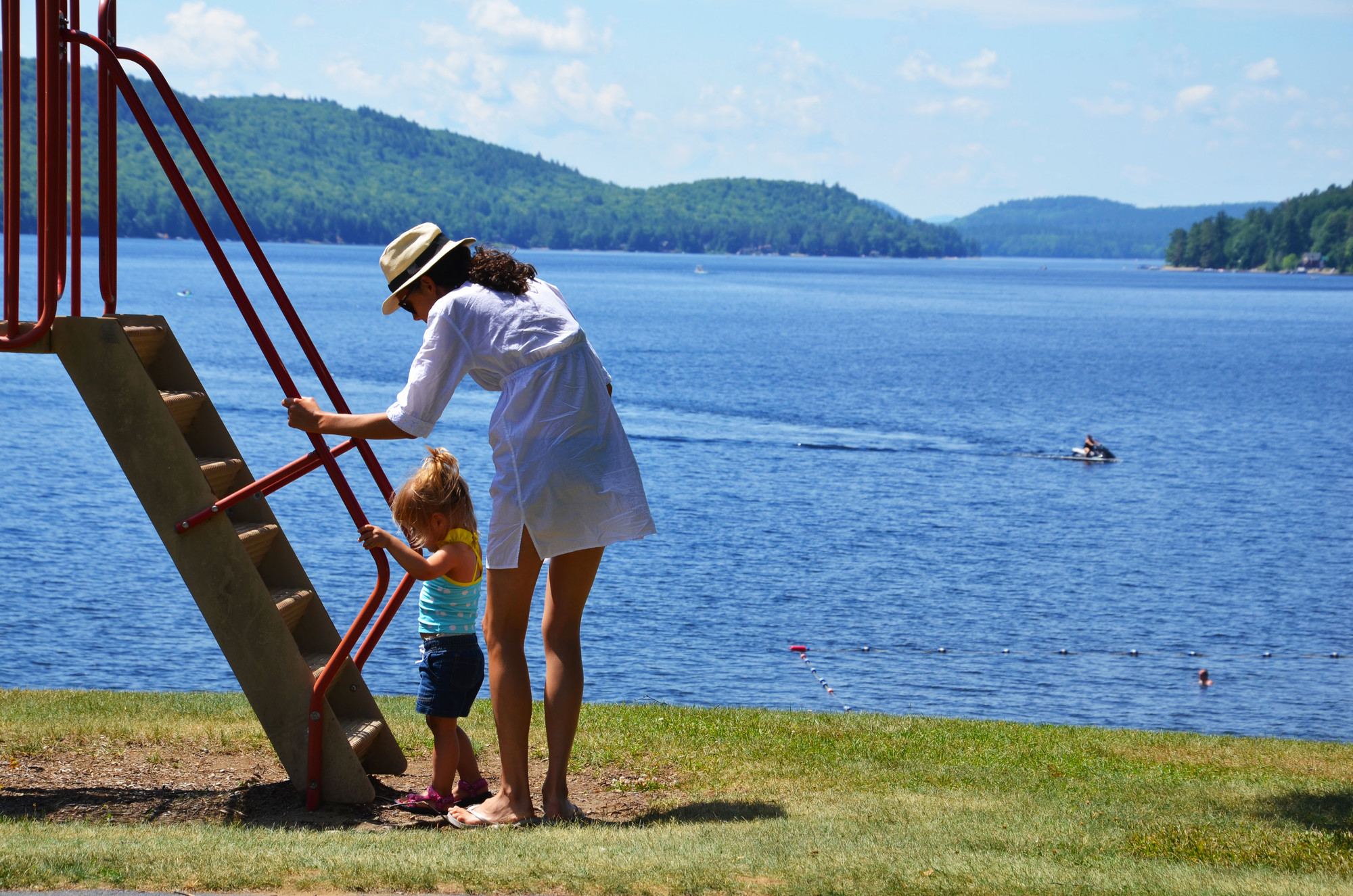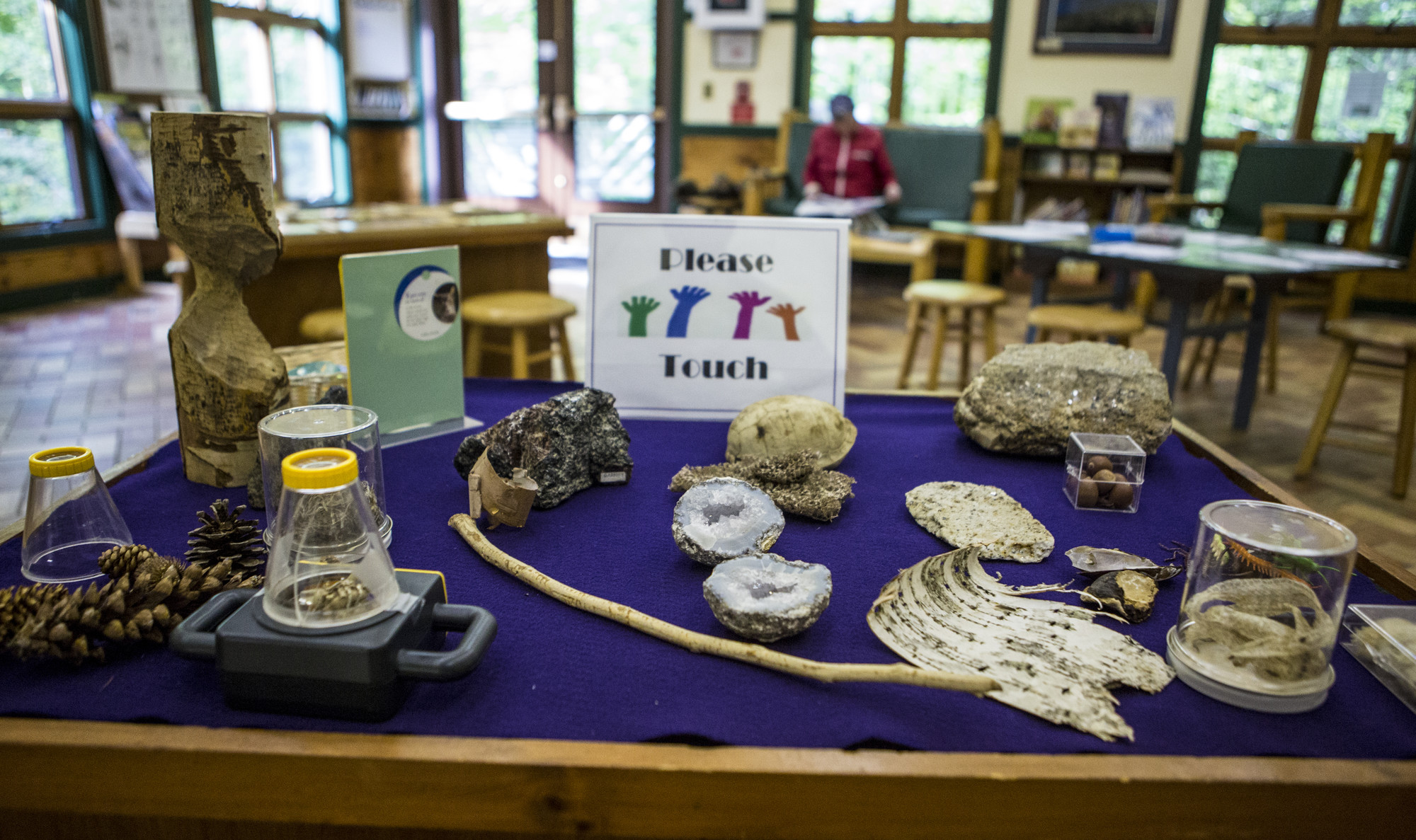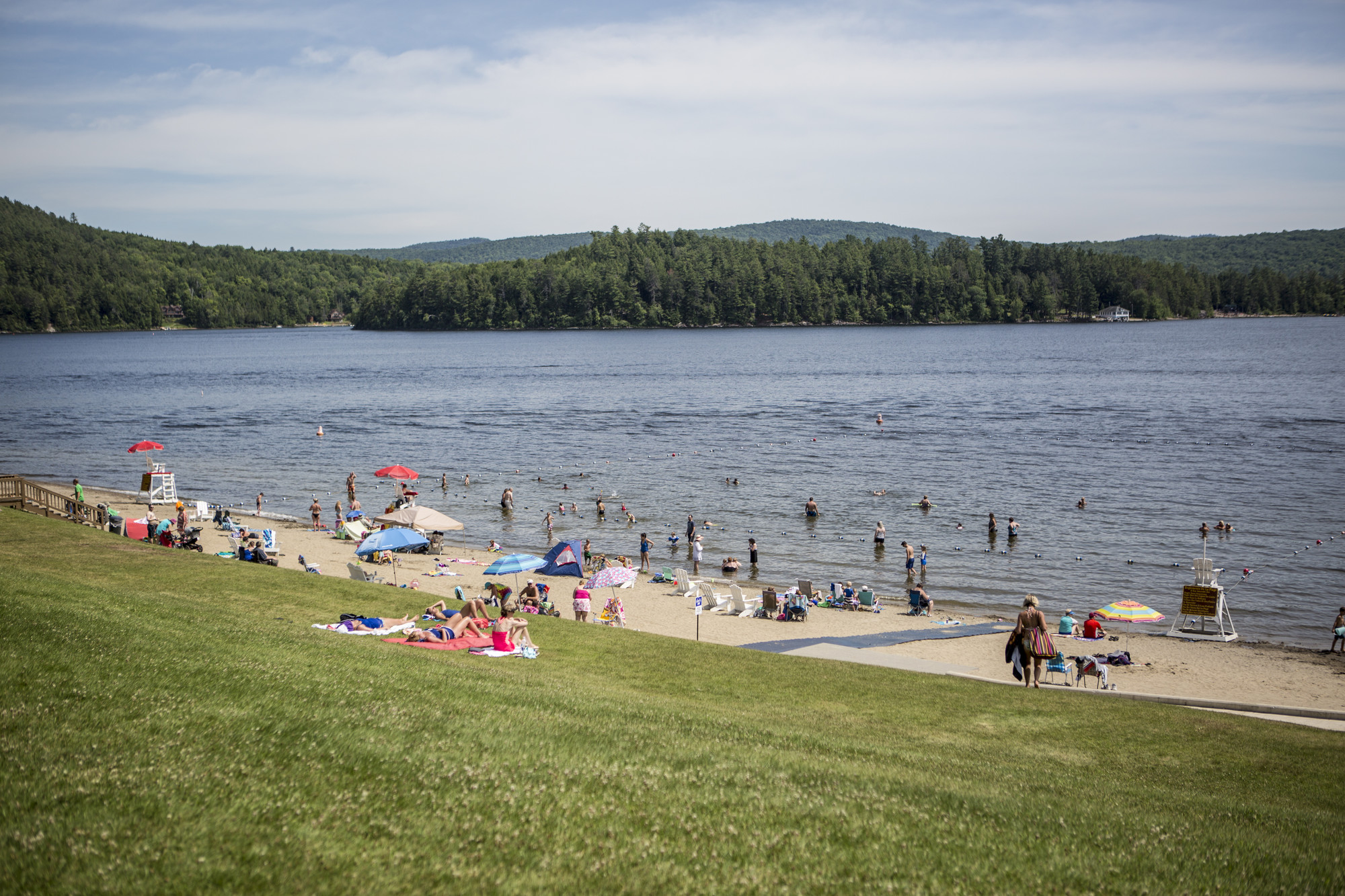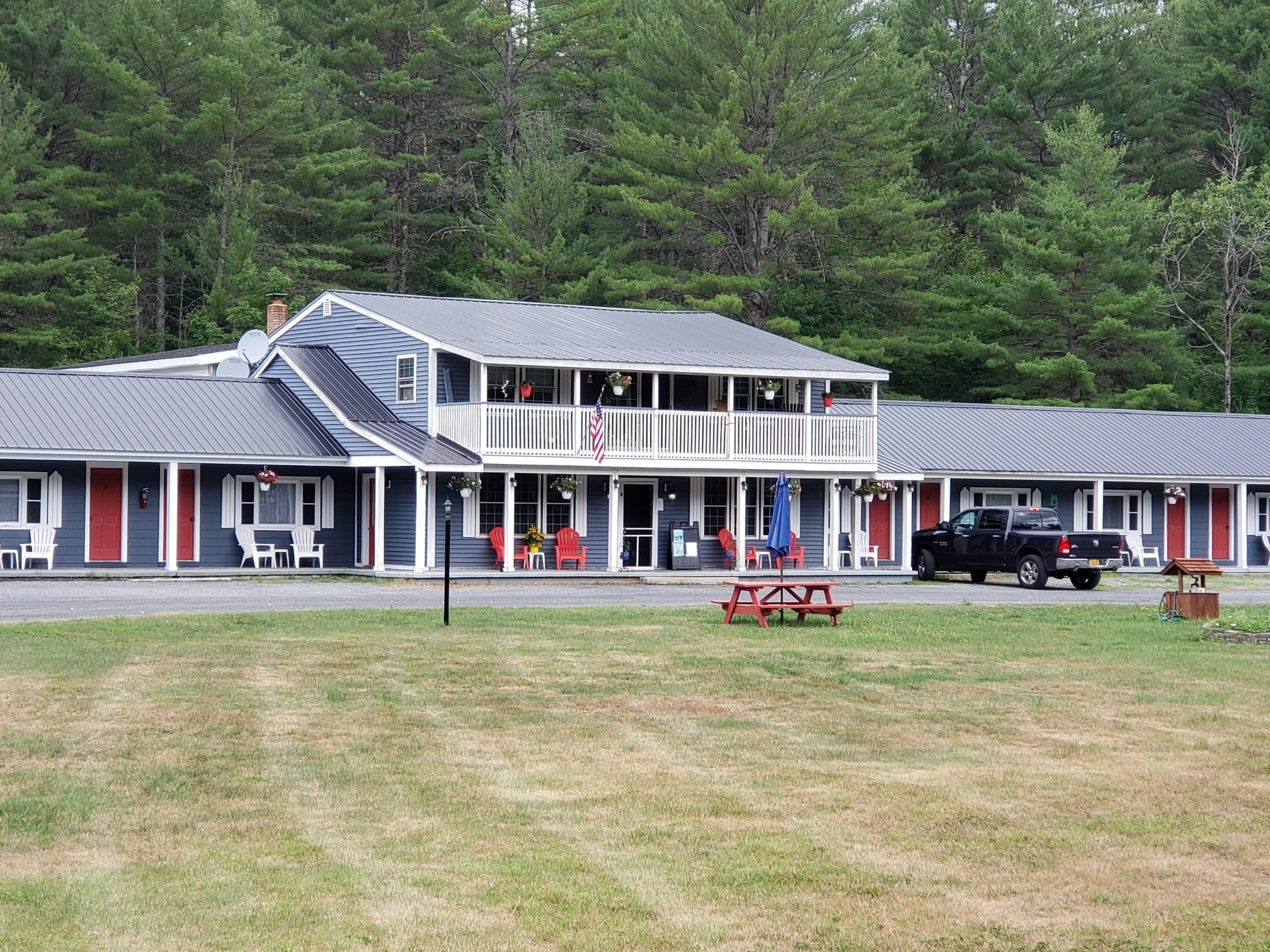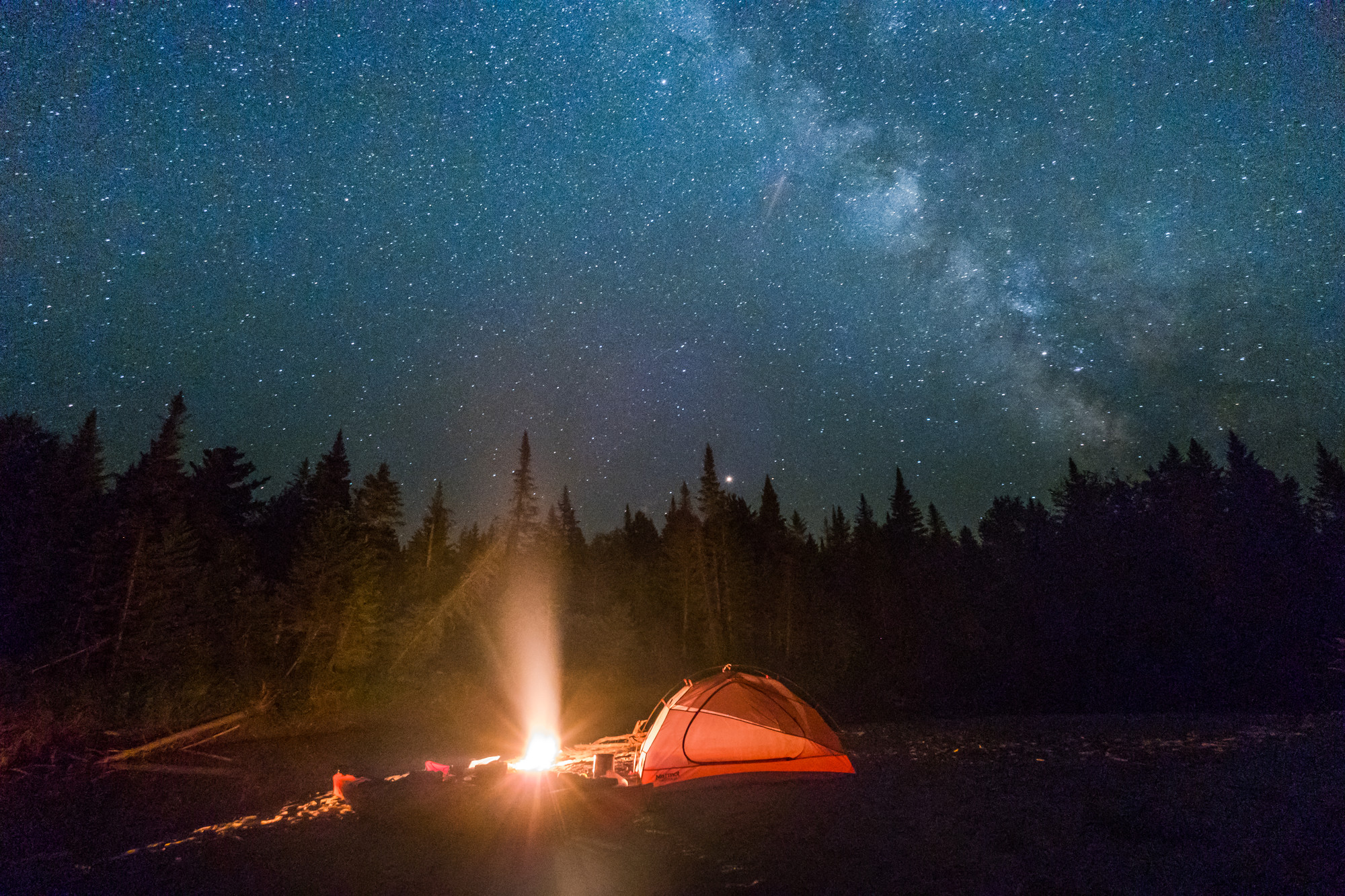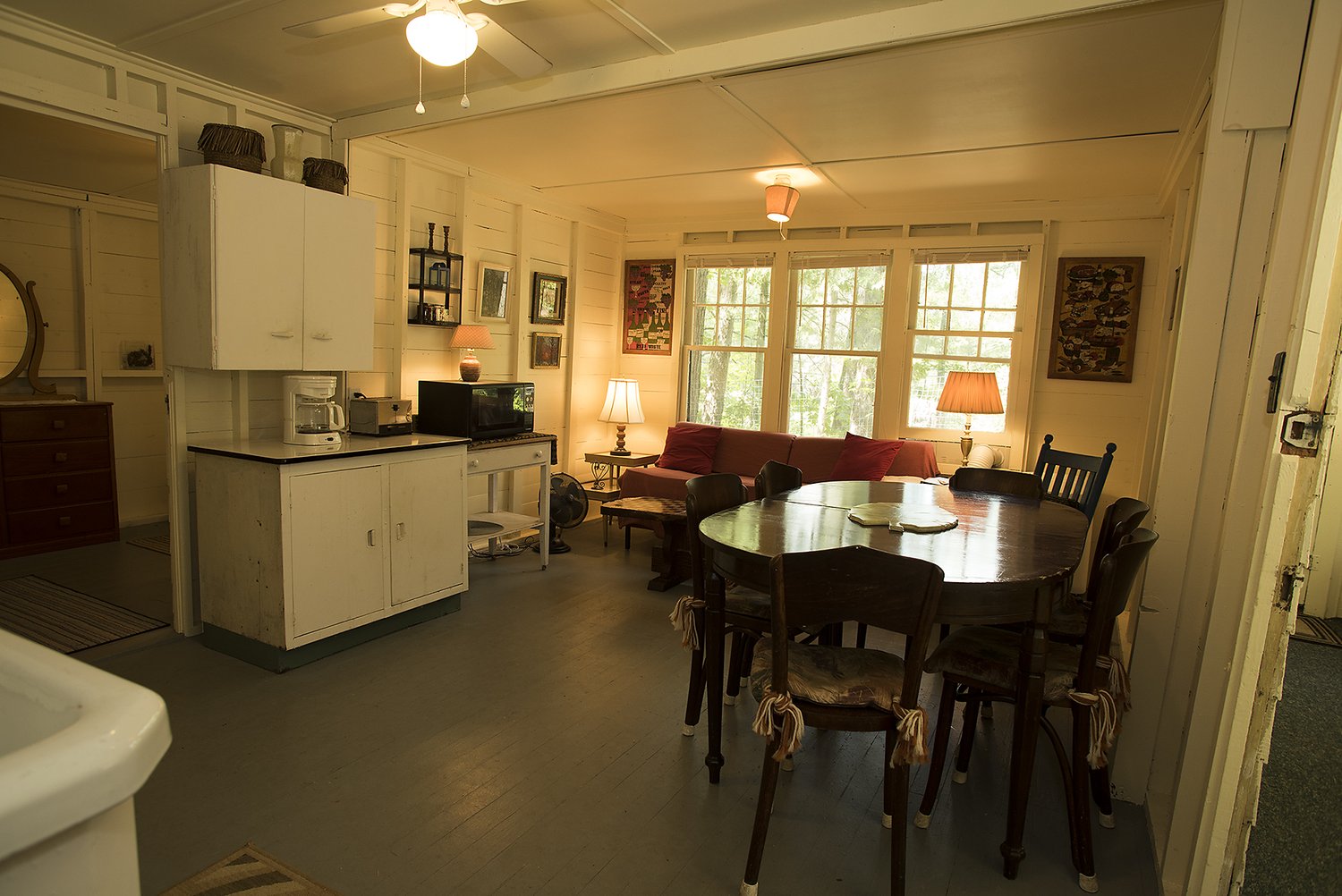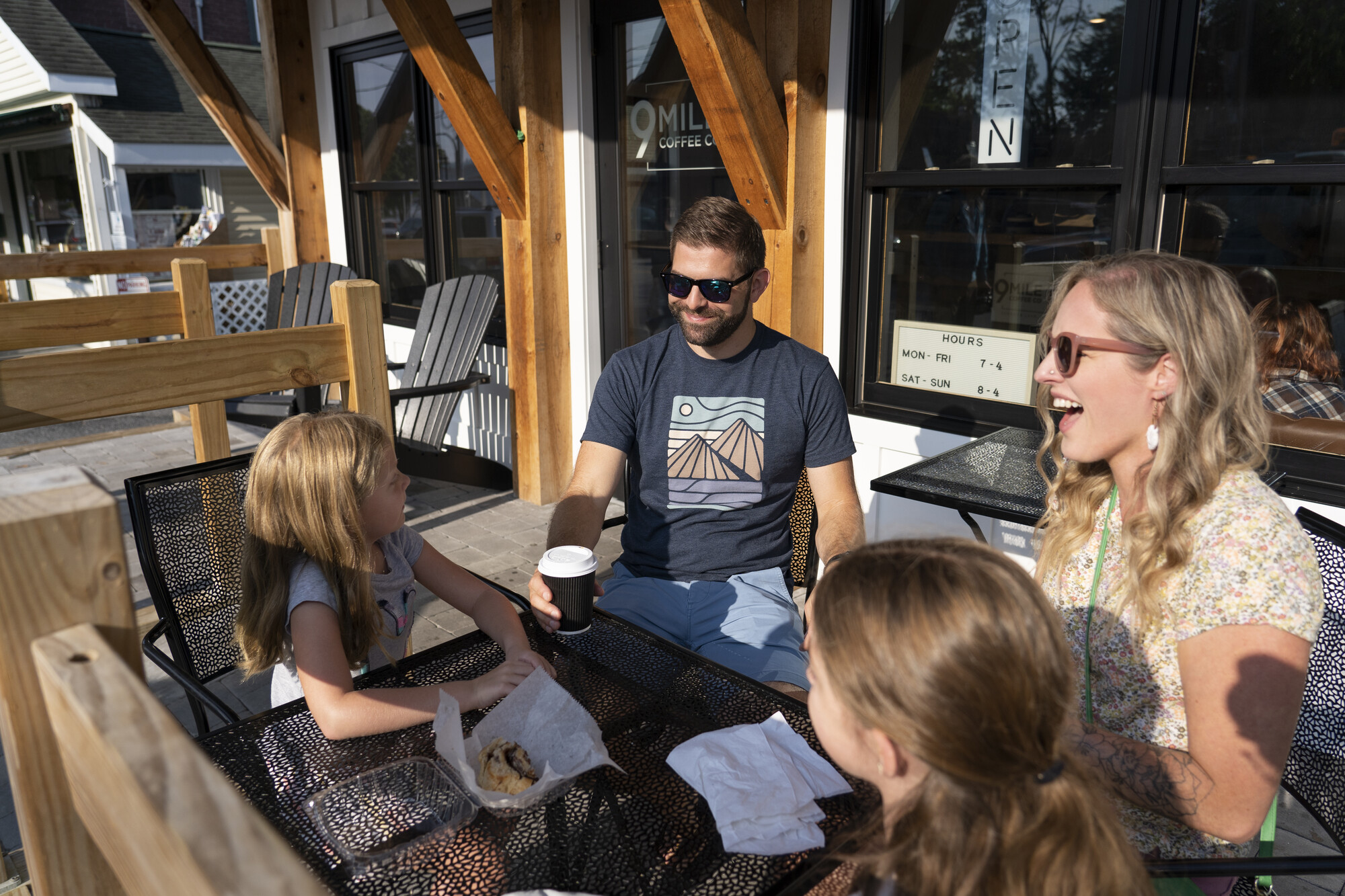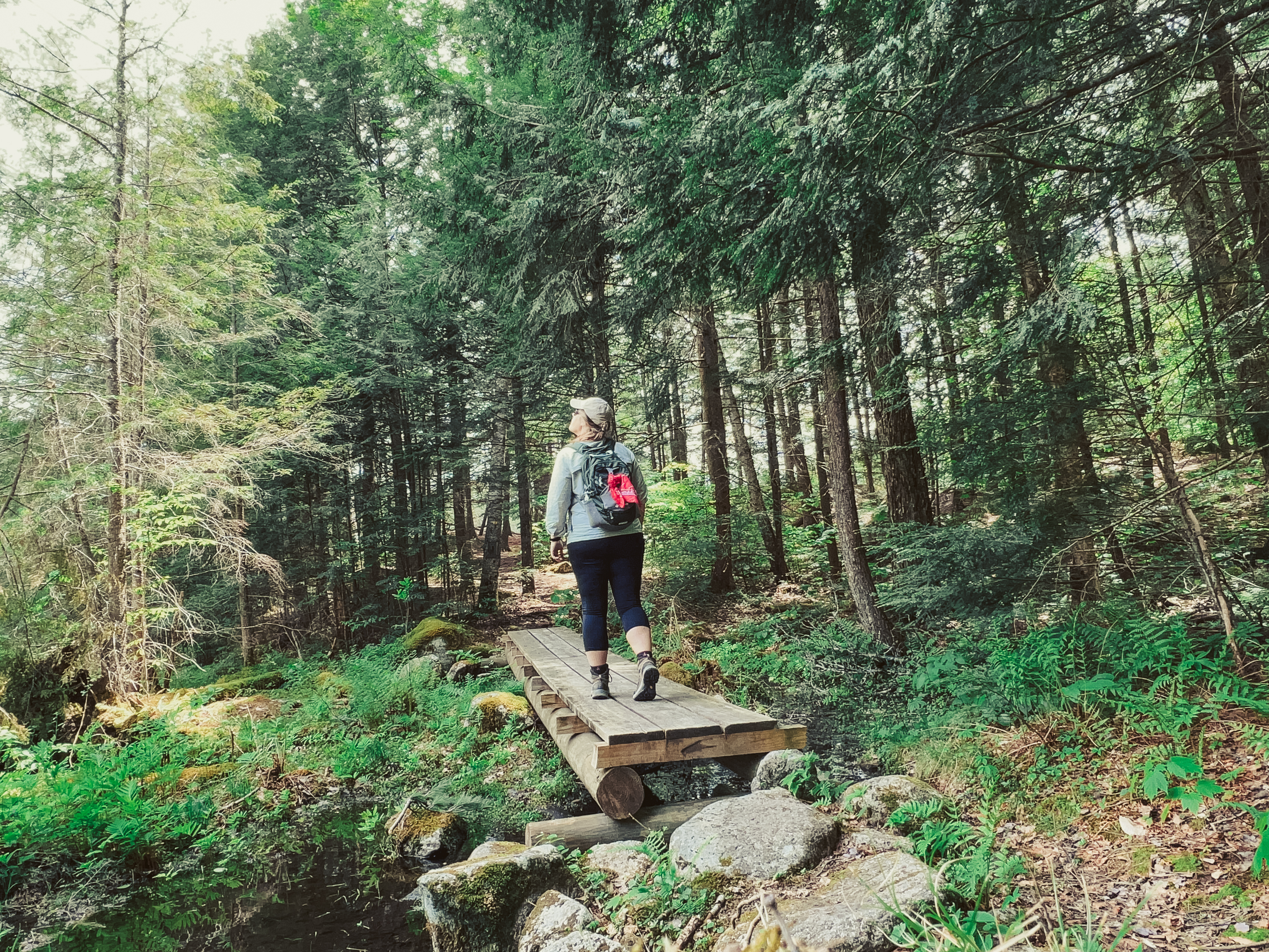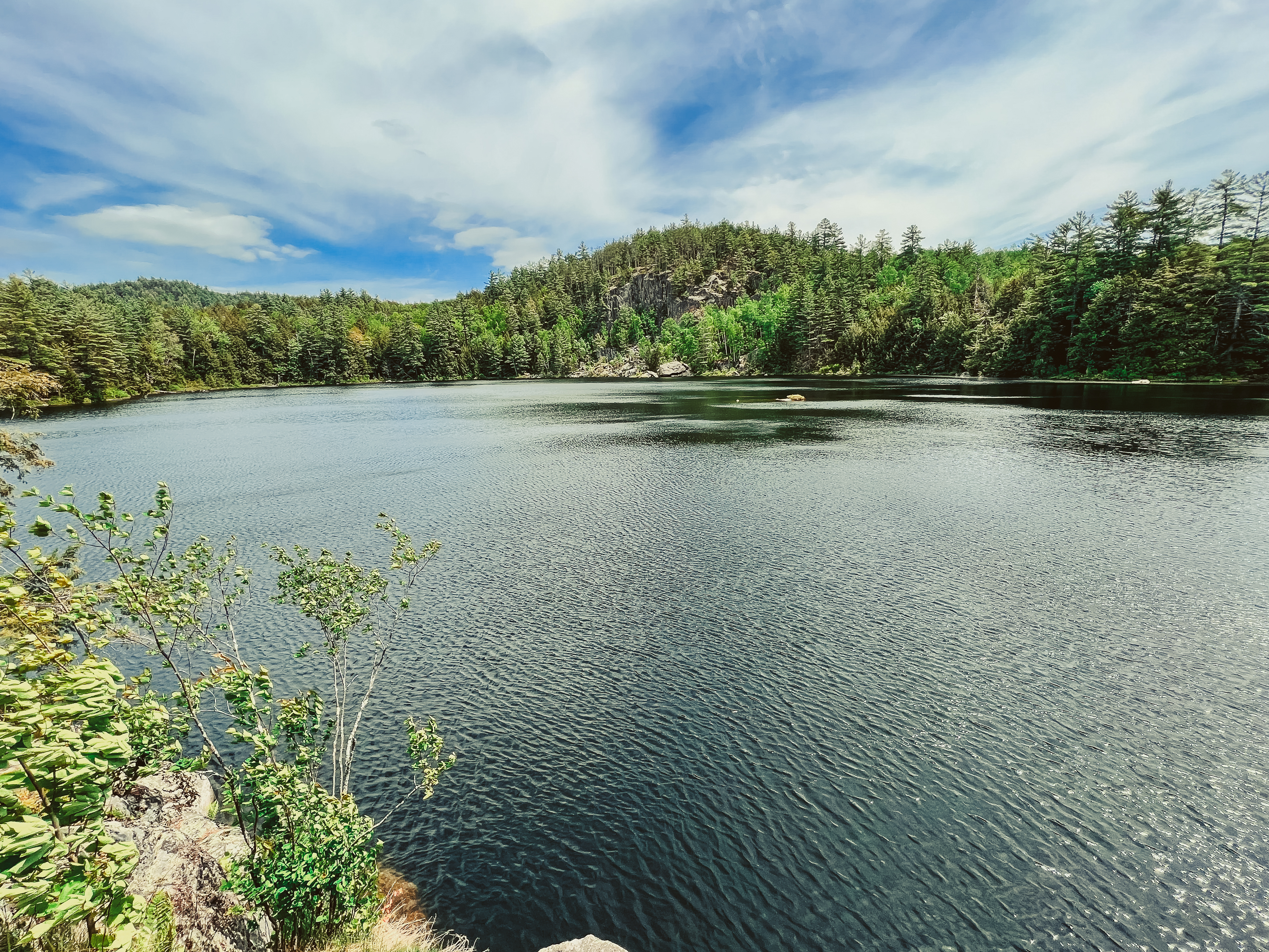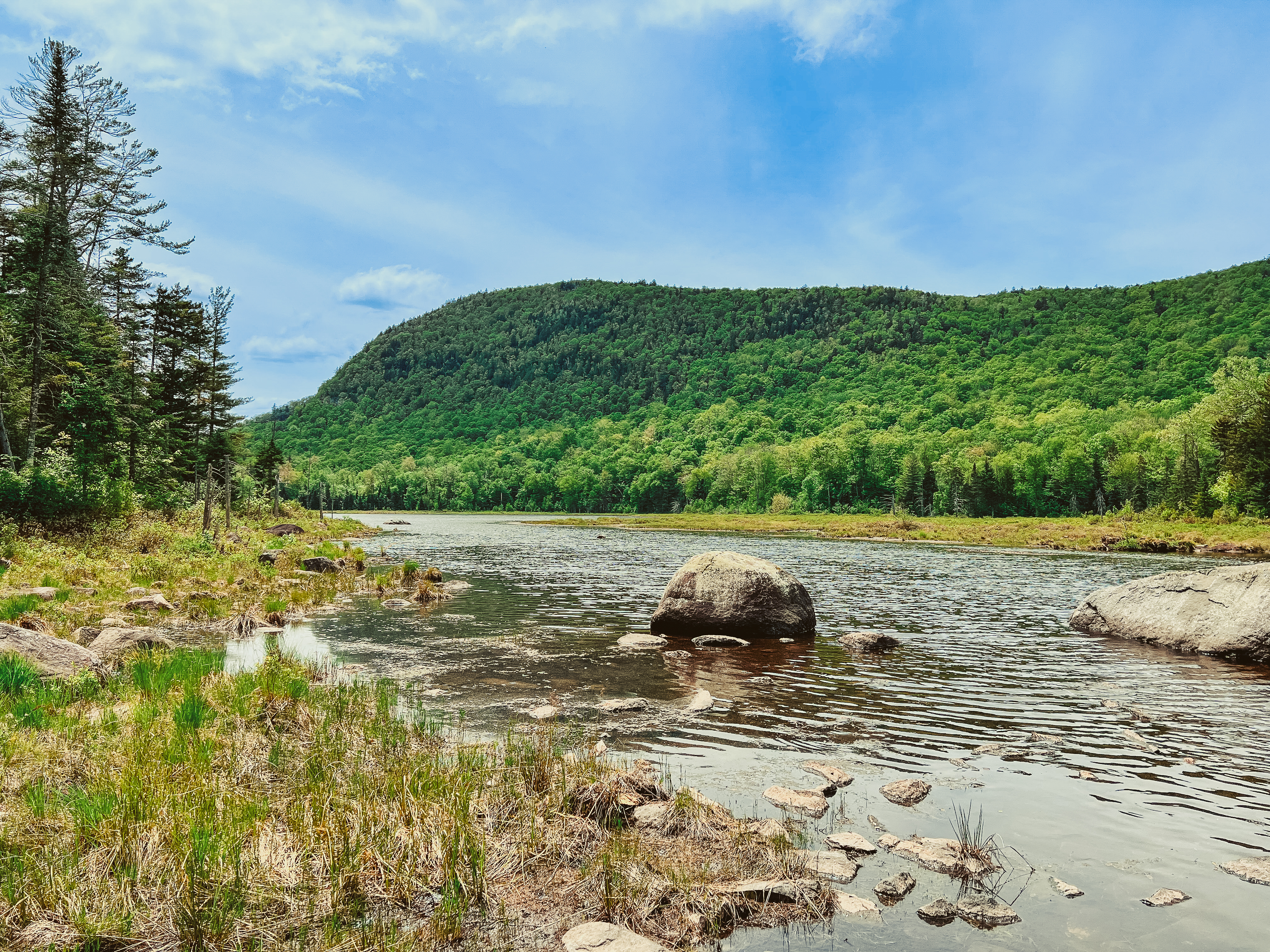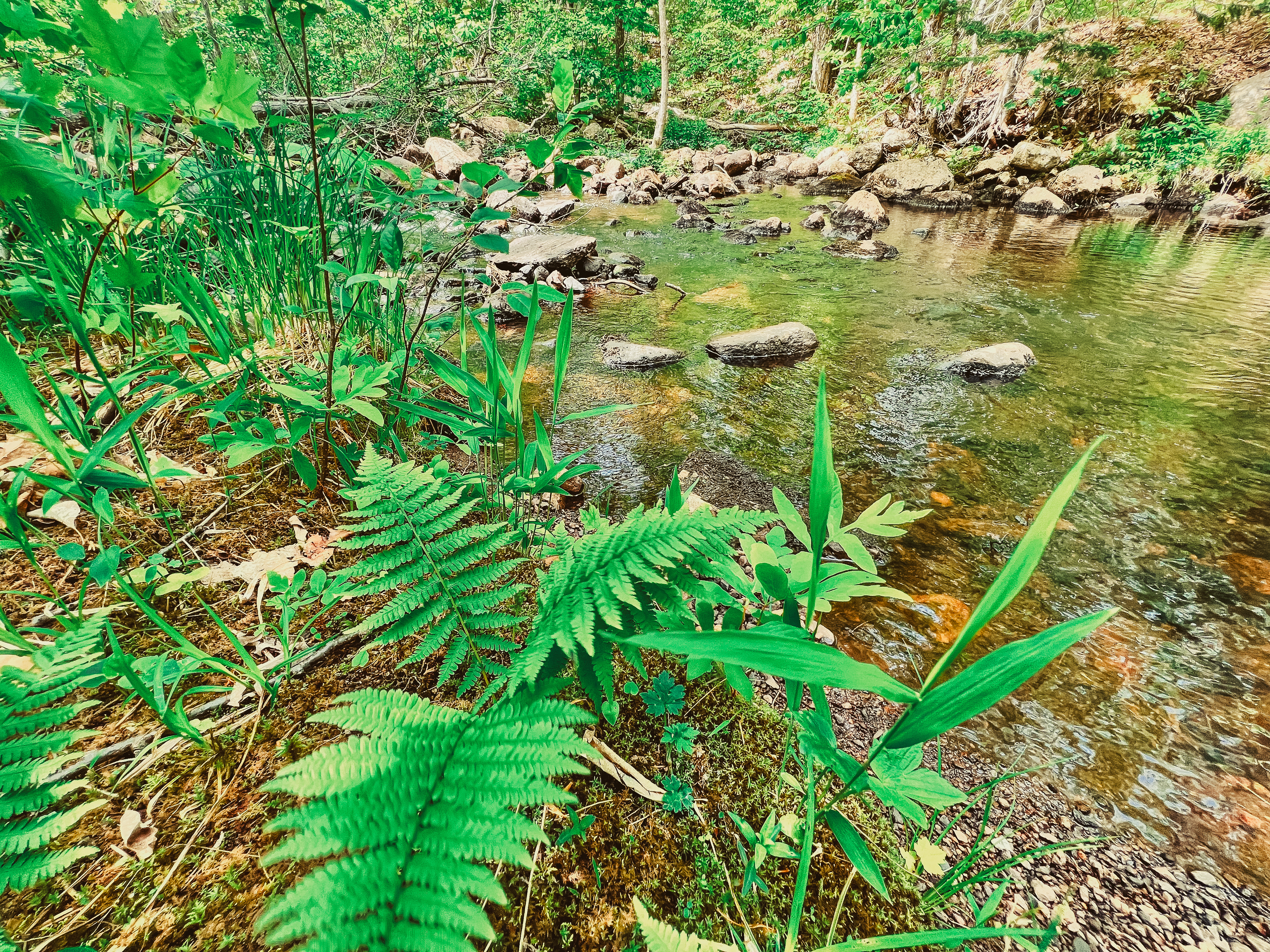"Solitude is the place of purification."
-Martin Buber
Recently, I found myself hit with an unexpected bout of cabin fever. Living in the Adirondacks offers plenty of natural space — over six million acres worth — and my day-to-day activities of hiking, cycling, and mountain biking have offered me plenty of outdoor time over the past season. So where was this need to “get out” coming from? It dawned on me that aside from a quick overnight trip to Burlington, VT and visits to see my family in Syracuse, NY, I hadn’t travelled anywhere since July 2019. An unusually hot, humid, and rainy summer season took away all camping plans I had made, my version of “getting away” whenever I needed a breath of fresh air (literally and figuratively). A change of scenery was in order, and so I set out to take a solo trip somewhere with my books, journal, bike, and guitar — one of my favorite things to do and something I hadn’t done in far too long. My schedule did not allow for me to go very far, so the decision was made to explore something new in the six million acres of the Adirondacks, a some-travel-required stay-cation.
Between the unpredictability of October weather in the mountains and my woeful existence as a weenie when it comes to the cold, camping in a tiny tent was out of the cards. The idea of just sitting in a hotel, motel, or even a bed and breakfast seemed too stuffy. “If only I could combine the nature part of camping with the space and warmth of a hotel room,” I thought. I asked around for ideas, and a friend inquired if I had ever gone glamping.
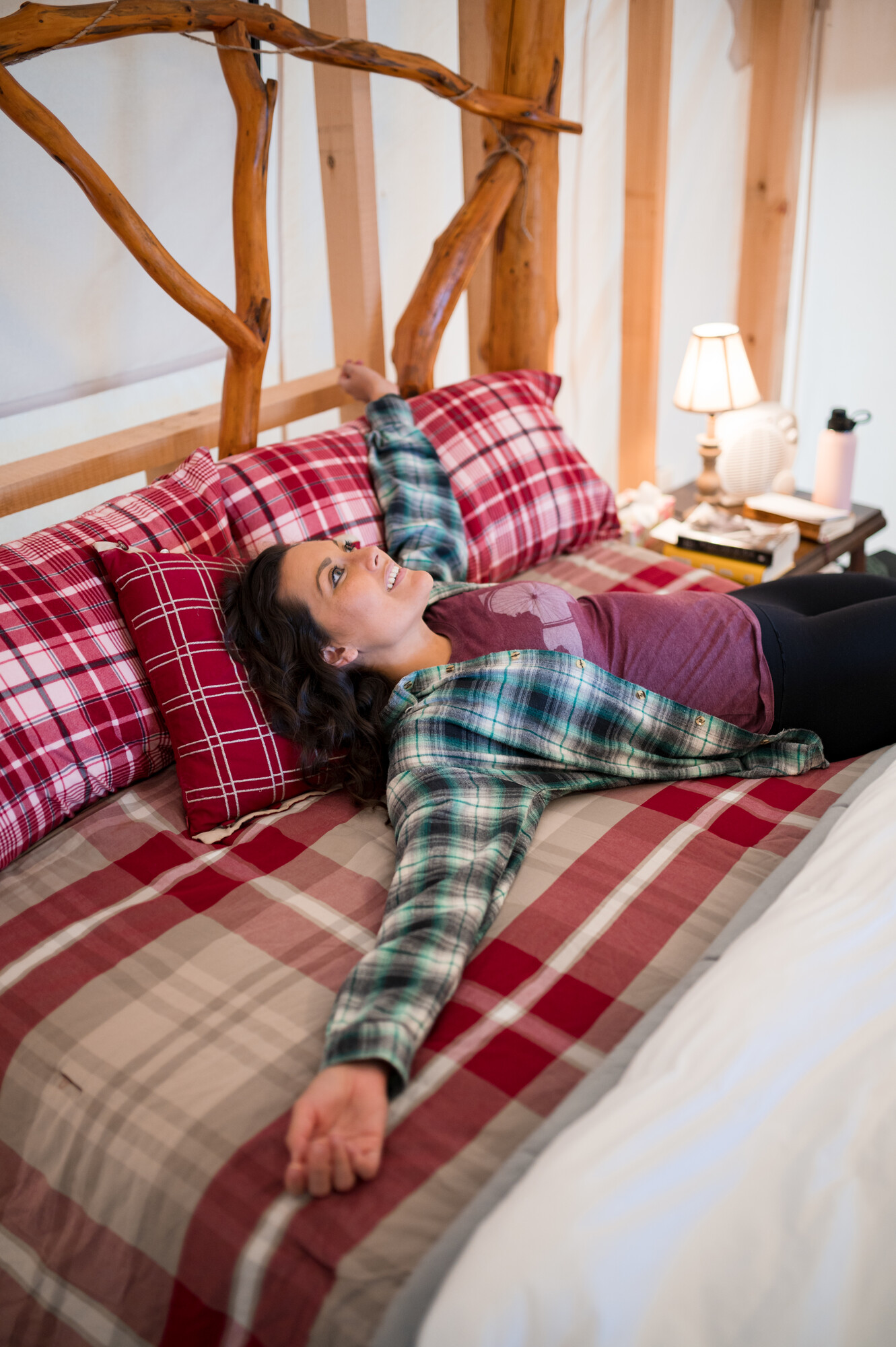
Now let me be clear: “glamping” is not a word I would ever search for on my own. I have always — perhaps unreasonably — felt as though the idea of “glamorous camping” defeated the rugged intention of camping, like I was somehow cheating some unspoken book of rules for how to enjoy the wilderness. Plus, that inherent ruggedness was my favorite part about camping. But my desperate need for the outdoors combined with my claustrophobic response to the idea of lodging indoors made me curious to at least consider the idea. After a little research, I came across the Lake Harris Lodge, owned by the dynamic duo of Kelly and Tony Audino. I took a chance, booked my site, and packed my bags for Newcomb, NY for my first ever glamping experience. It is, hands down, one of the best decisions I’ve made in recent months.
Girls’ night out: party of one
As I pulled into the Lake Harris Lodge, I was able to park my car at the top of a hill directly next to two of the four available glamping sites. As soon as I stepped out, the view of Lake Harris surrounded by fall foliage made me realize I had picked the perfect spot for some peaceful solitude.
My site was located at the bottom of the hill, right next to the water. As I walked down, the smell of freshly cut wood filled the air, the lovely indicator that this particular glamping tent was recently built. I was greeted by a perfectly sized porch with two Adirondack chairs and fresh flowers awaiting my arrival. A fire pit created specifically for my site sat right along the water’s edge, the perfect spot to read, watch the birds, and gaze upon the world.
The glamping tent itself was so much larger and more decadent than I could have imagined. I had brought a sleeping bag and pillow, but there was no need. The screened in entrance revealed a plush, queen-sized bed, complete with a soft, warm duvet and plush pillows. Jackpot.
The site itself looked like a cross between a tent and a cabin. There were end tables. Cabinets. More fresh flowers. Sitting chairs. A small writing table. A shelf with battery-powered twinkle lights in mason jars. A wooden “bench” of sorts at the end of the bed. But my absolute favorite amenity was a delightful surprise: a fireplace.
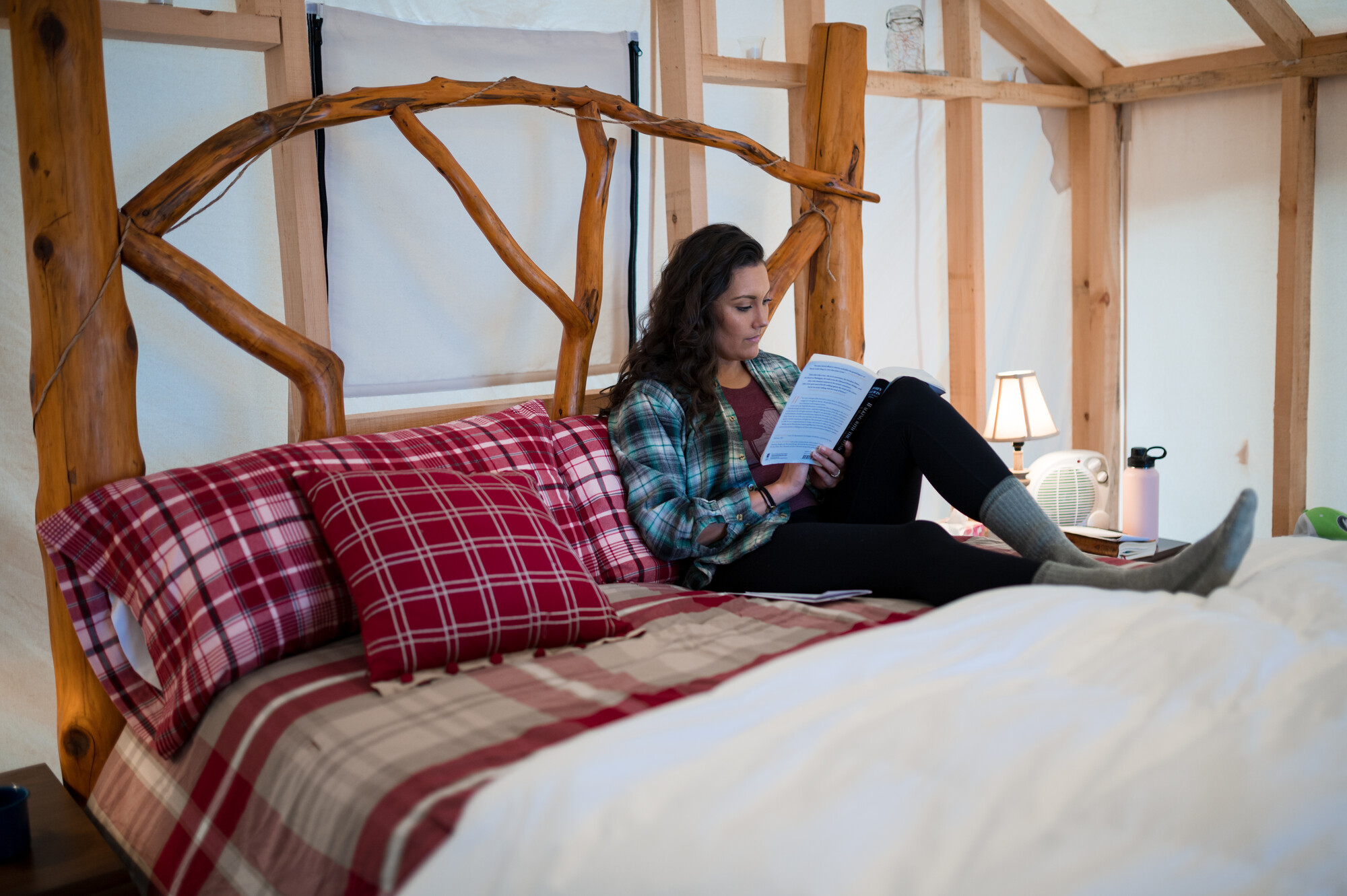
A warm and cozy getaway
My bag was packed with the normal items one brings for a single overnight stay in the quasi-outdoors: five pairs of socks, two hats, gloves, two pairs of sweatpants, endless layers of tops, hand and feet warmers...you get the idea. (Okay, okay, so my list is far from normal. Remember when I said I was a weenie in the cold?) All that said, you can imagine my delight when I looked around my site and saw a beautiful, elegant, propane fireplace in the corner. A fireplace! In a tent! All my hopes and dreams were coming true! I later learned that the material of the tent was fireproof, easing all of my concerns that came to my naturally-anxious mind.
I was fortunate to be met with perfect fall temperatures that afternoon and didn’t need to touch the fireplace until the evening. My site warmed up within minutes of turning it on, and I enjoyed the perfect glow the fire cast on the entire space. The rest of my outrageously overpacked bag remained untouched for the trip as I enjoyed reading while in the coziness of my single layers.
Row, row, row your boat!
My normal idea of a good time usually involves a bike or a hike. But something about the perfectly calm waters of Lake Harris called out to me to try something new. I checked to see if there were nearby boat rentals, and sure enough, Cloud-Splitters Outfitters was less than a mile down the road. The owner, Dave, was more than helpful, talking me through the kind of boat to rent and using a moment of free time he had available to actually deliver my rental kayak to me, fully outfitted with a paddle and universally sized PFD. For the first time in my life, I chose the calm stillness of paddling on smoother-than-glass waters rather than biking, running, or hiking to explore my surroundings. It was new, easy, and far more peaceful than I would have expected.
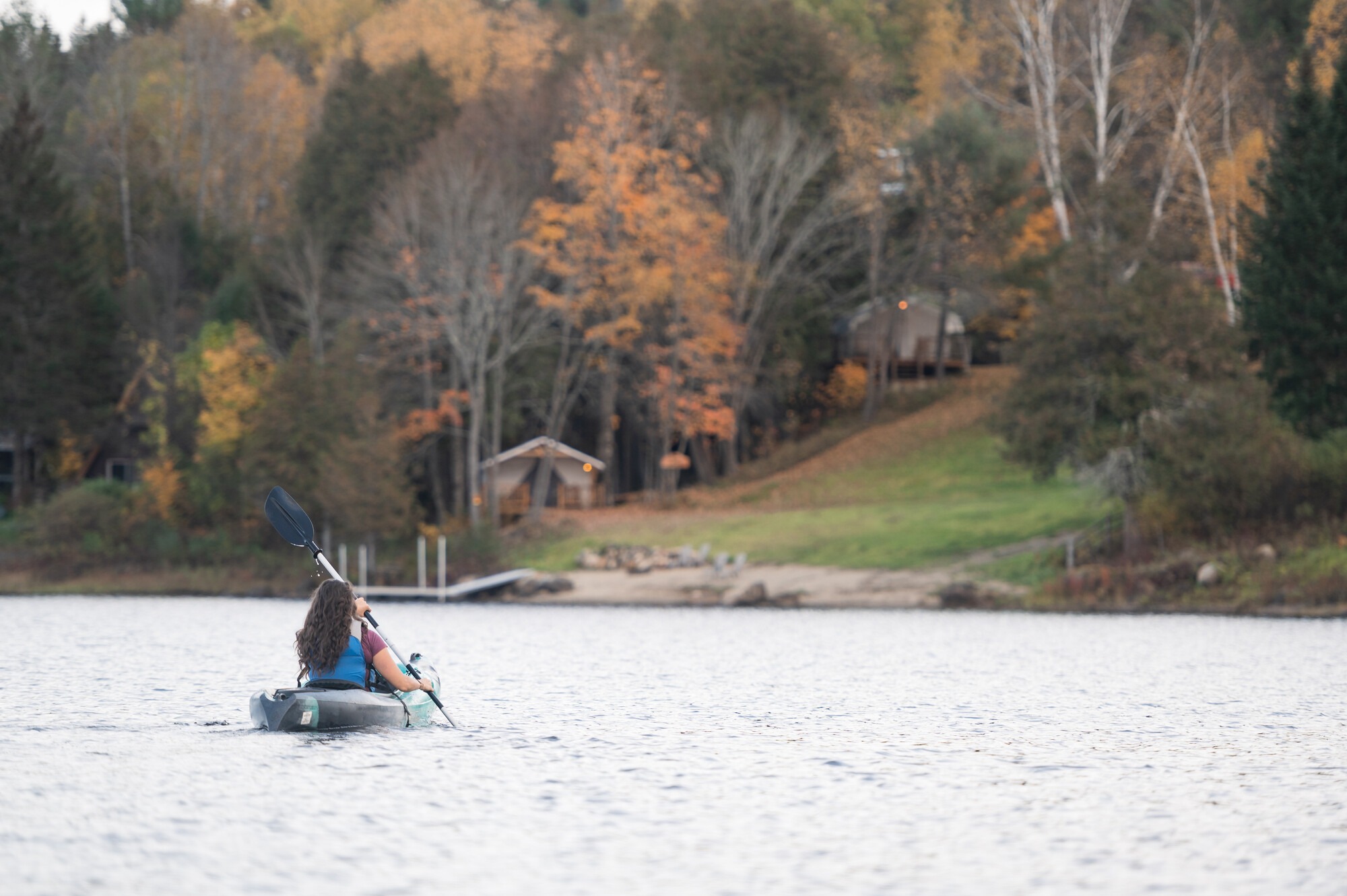
Being a new paddler, I stayed close to shore just to be on the safe side. But having the put-in directly in front of my tent site gave me the security I needed to, dare I say, test the waters. (Groan. I know, I know...that was bad.) Aside from my natural nervousness surrounding boats, my biggest reservation surrounded how I would transport the boat to and from my site. But Dave from Cloud-Splitters, again, had a moment to kindly come over to get the kayak back to his shop. It was a gesture that was greatly appreciated and took all stress away surrounding the logistics of transportation for a beginner like me.
Delicious dining with conversation for dessert
It finally came time to eat. I knew dining was available in the lodge, but I did not expect the menu to be as extensive and varied as it was. I ordered a hearty, filling, tasty Bacon Cheddar Chipotle Burger that was cooked to perfection with fantastic French fries as a side. I often joke that I judge the quality of a restaurant based on its French fries, but I think the reality is that I just really like excuses to eat fries. That said, if fries actually did define the quality of a restaurant, the Lake Harris Lodge gets a gold star.

The Audinos were kind enough to sit with me as I enjoyed my dinner. I learned they had met in 2002 in the Albany region. Neither worked in the restaurant industry at the time, but both families had members with a background in the food industry. After getting married, the Audinos moved to Newcomb in 2013. Within three years, both Kelly and Tony’s mothers had passed away, as had Tony’s father. The loss of their parents caused the Audinos to re-think the trajectory of their lives and dreams they had previously considered and put aside. “Our lives no longer were, ‘Well, we will do this when ________,’” said Mrs. Audino. “We realized we were done waiting.”
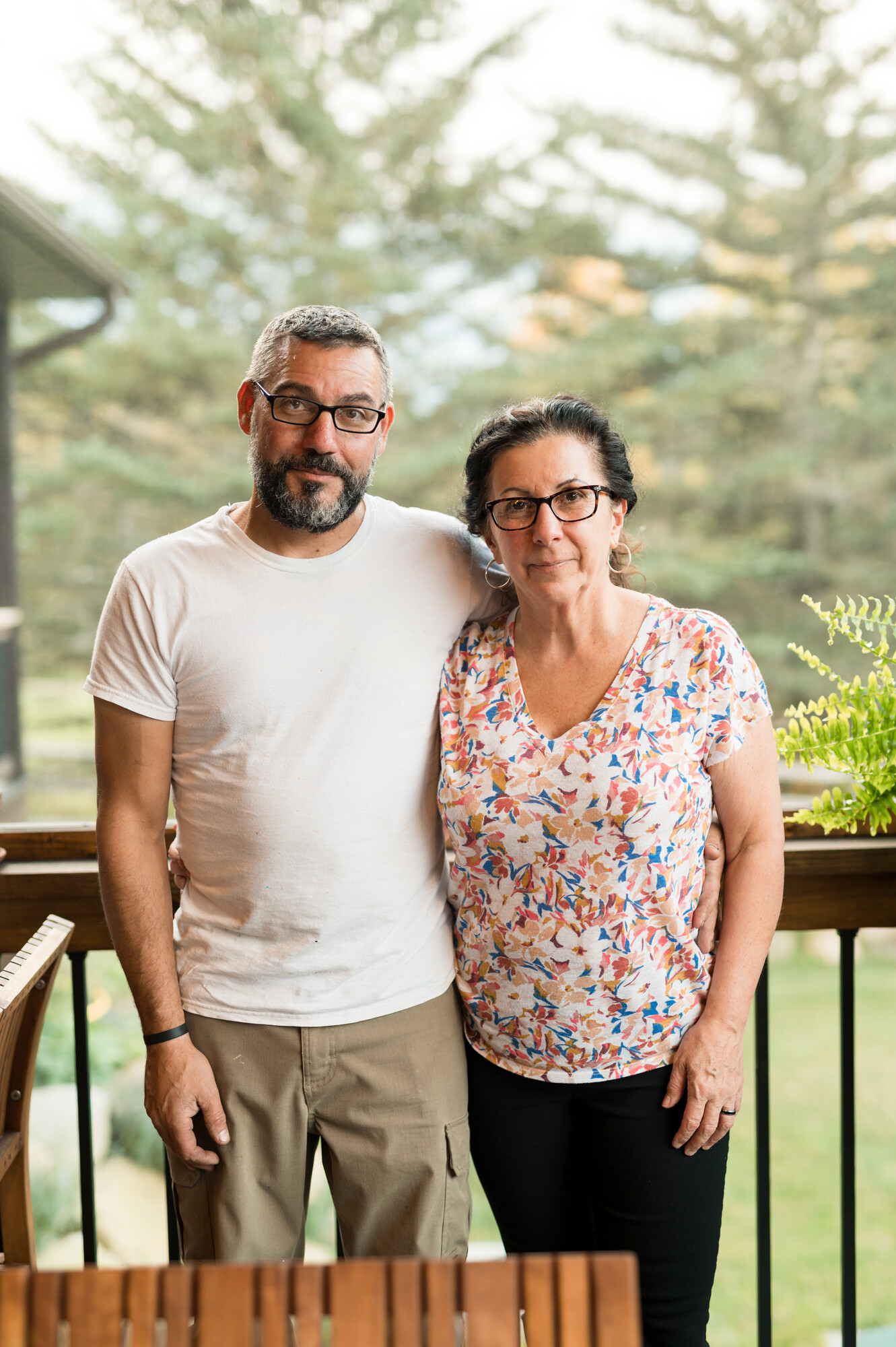
In 2017, the Audinos took another chance on purchasing land on which they would build another dream: The Lake Harris Lodge. Mr. Audino designed the building from top to bottom, including new additions being added to the basement (more on that in a moment). Opened on January 1, 2020, the two-floor building has indoor and outdoor dining with options of open-air patios, screened-in porches, a private dining room with an attached balcony, and a dining room that expands throughout the main floor of the house. The vast options on the menu are sure to please any number of palettes, as does the wine, beer, and signature cocktail menu. Any culinary connoisseur would be delighted by a weekend dining experience at the Lake Harris Lodge based on just their lunch and dinner menus, alone.

Even the decor of the bar added to my appreciation of the experience, the walls aligned with historical photos donated, matted, framed, and mounted by the Newcomb Museum and the wooden, handmade bar complete with etchings of images that capture the heart of Newcomb designed, crafted, and carved by a friend of the Audinos, Jackie LaCourse. LaCourse created a second bar with more etchings which adorns the second floor of the Lake Harris Lodge.
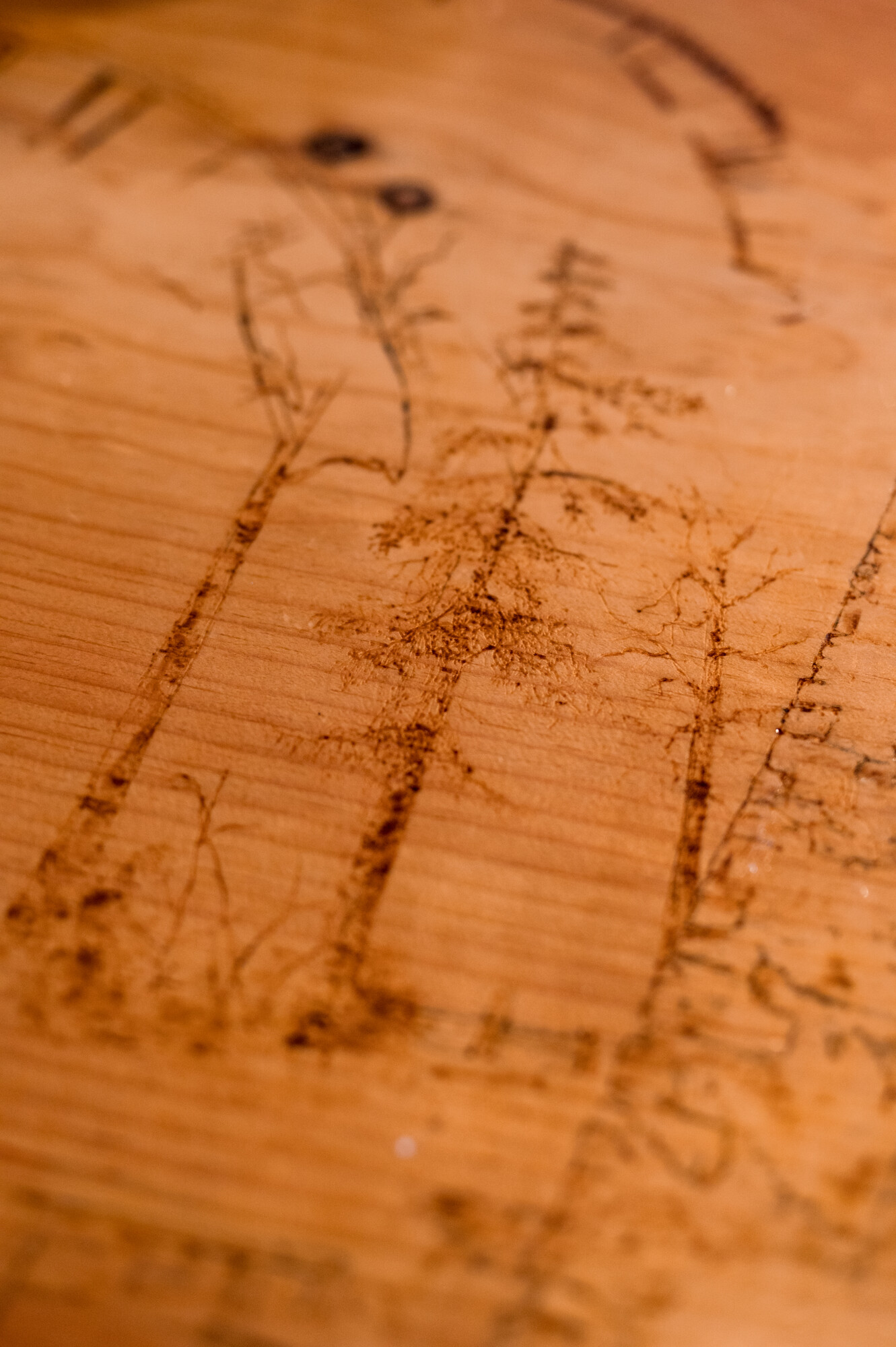
The Audinos have poured themselves into the creation of the Lake Harris Lodge, but they were quick to mention time and time again how the community endlessly offered to volunteer their time to help for no particular reason. “People would offer their time constantly,” said Mr. Audino. “I mean, people would drive up while I was working on roofing and ask if I needed a hand, and then they would actually come help me out. We had some women come in and hand stain all of our wood. The museum provided us with all of these images you see on the wall. Everything in here has a story.”
Future plans
While I paddled on the water, I heard the sounds of tools in the distance as Mr. Audino worked on building an addition in the basement. The space includes a bar that he envisions will have a bit more of a sports bar feel to it with an additional room used for a wine and whiskey tasting room. He is also building a sitting space which will be used for their glamping guests. “You never know what can happen with the weather around here,” said Mr. Audino. “So the idea is to give people a space to go to where they can still enjoy themselves in case the weather turns and their plans to be outdoors changes.” The space will include coffee, baked goods, access to WiFi, and sitting areas. He also hopes to add a kitchen space for guests to utilize during their stay.
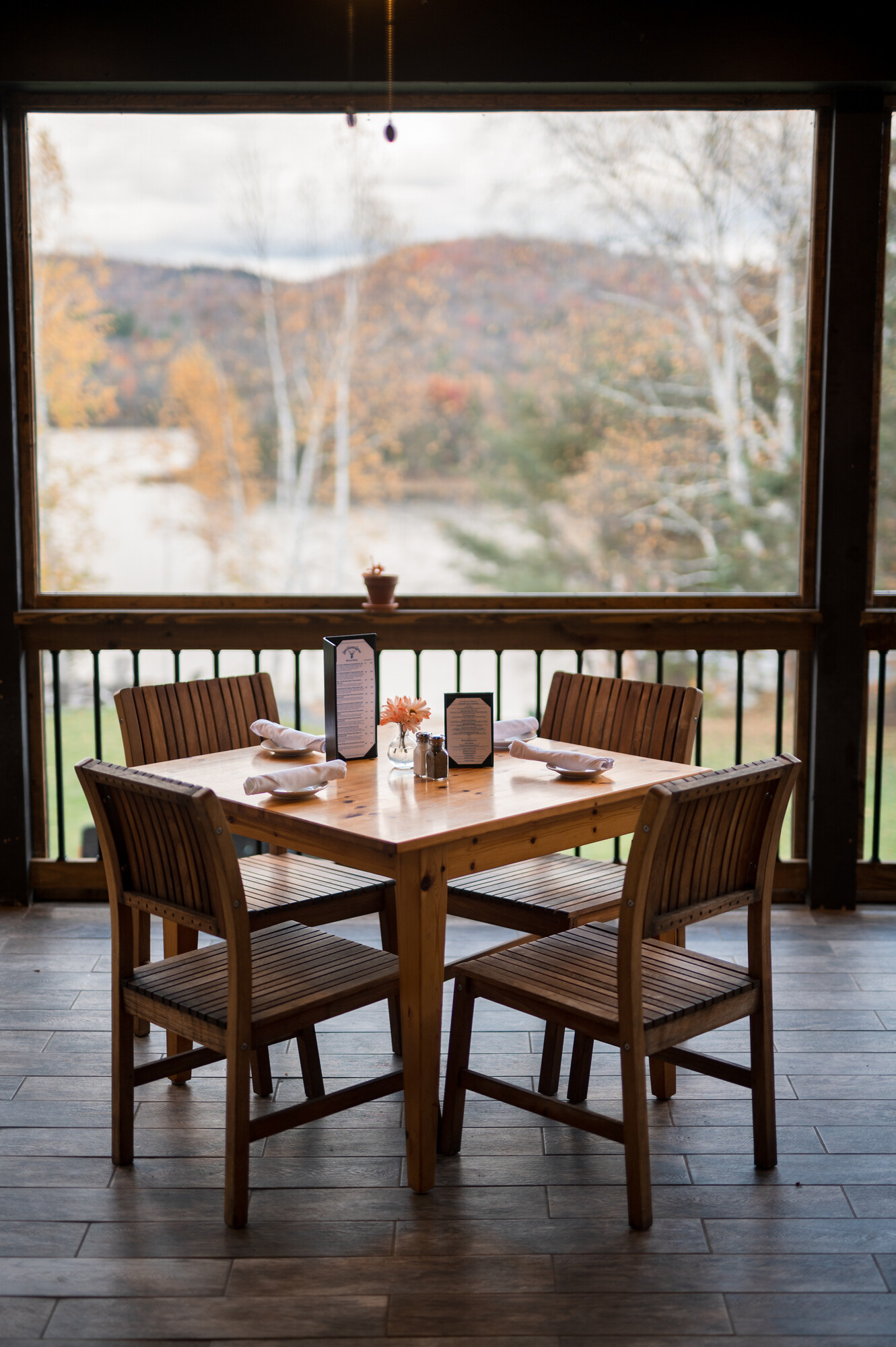
The Audinos have one more dream addition to their property: an adult treehouse. “The intention behind the glamping sites was to give people something unique,” said Mrs. Audino. “The treehouse would give them yet another option for unique lodging for people in and around the region.” Mr. Audino had a twinkle in his eye during the conversation.
“It would be pretty cool,” he said with a smile. I let them know I would be first in line if and when their treehouse came to fruition. Judging by the lightning speed at which Mr. Audino was assembling the basement, a new wall seemingly completed every time I turned my head, I can’t help but think the Adirondacks will be treated to an option for treehouse lodging sooner than later.
Winding down for the day and plans for another getaway
I wrapped up my evening with playing my guitar for the first time this season and reading a good book. My head hit the pillow before the sun even set (a rarity for my nocturnal tendencies), and I was soothed to sleep with the rustling of leaves before an early departure the next morning.
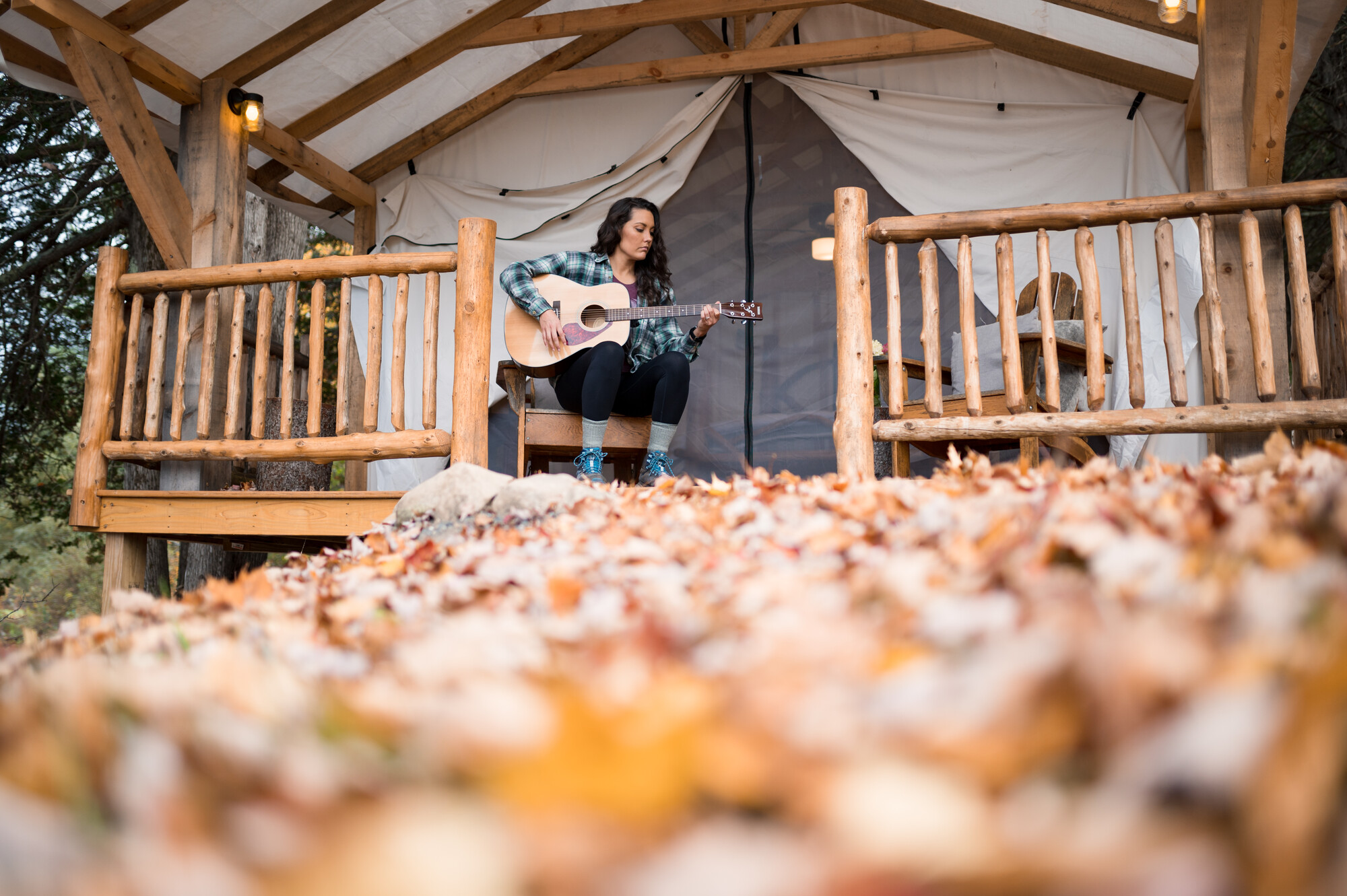
I drove home while mentally planning my next visit to the Lake Harris Lodge, remembering various suggestions the Audino’s had given to me as things to do when I had more time to stay and play such as hiking Goodnow, the AIC center, or — if I want a bigger day, exploring the southern tier of the high peaks. While I’m not a golfer, I could try my beginners' luck at the High Peaks Golf Course. I hope to bring my fiancé to the Lake Harris Lodge once the snow falls to enjoy some winter glamping and skiing at the Santanoni Great Camp while snowmobilers zip around the region.
In addition to being able to proudly say I have “glamped,” I truly feel gratitude in discovering such a peaceful, hidden gem tucked away in Newcomb, NY. I encourage you, dear reader, to make a reservation and enjoy the loveliness of the Lake Harris Lodge.
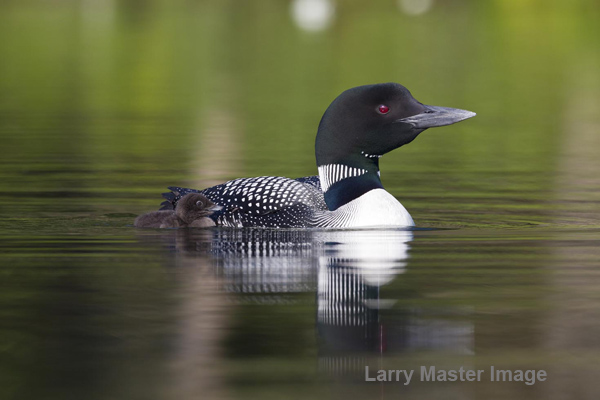
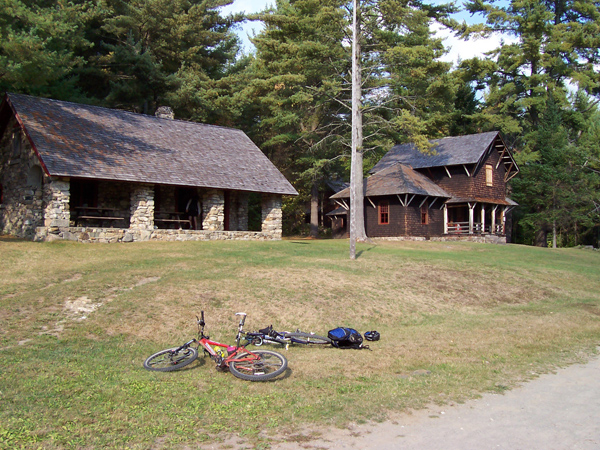
 I had a chance to talk with Liz and Larry McNamara,owners of The Strand Theater, this morning about some exciting news! But before the great news, you have to understand what Larry, Liz and other historic or small town theater owners have been going through in the past few years. You've probably heard about the Hollywood studios' industry-wide conversion from 35 mm film to an all-digital product. For us movie-goers, it is supposed to mean a higher-quality movie, sound, and faster access to new releases. (I'm admittedly not a movie expert or critic, so bear with my novice jargon!) The flip side of this transition is not so bright for independent theater owners; it means each theater, each screen really, needs to shell out about 100 grand for new equipment, electrical systems, ventilation systems, screens, and on and on. What are the odds that the owners of a small-town, historic, independent theater has tens of thousands of dollars just lying around for this exact occasion? About as likely as yours truly, a small town restaurant owner, having a few thousand in my rainy day fund. Yeah, not likely.
I had a chance to talk with Liz and Larry McNamara,owners of The Strand Theater, this morning about some exciting news! But before the great news, you have to understand what Larry, Liz and other historic or small town theater owners have been going through in the past few years. You've probably heard about the Hollywood studios' industry-wide conversion from 35 mm film to an all-digital product. For us movie-goers, it is supposed to mean a higher-quality movie, sound, and faster access to new releases. (I'm admittedly not a movie expert or critic, so bear with my novice jargon!) The flip side of this transition is not so bright for independent theater owners; it means each theater, each screen really, needs to shell out about 100 grand for new equipment, electrical systems, ventilation systems, screens, and on and on. What are the odds that the owners of a small-town, historic, independent theater has tens of thousands of dollars just lying around for this exact occasion? About as likely as yours truly, a small town restaurant owner, having a few thousand in my rainy day fund. Yeah, not likely.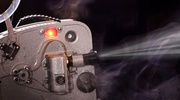 Larry and Liz started talking about other options to generate revenue for the theater, concerts, weddings, other special events. They enlisted the help of ANCA, the Adirondack North Country Association, a non-profit, rural economic expansion group that works with local and state governments, other non-profits, small businesses and universities to bring development dollars into our area. Across the North Country, there are 17 theaters that will be affected by the go digital or go dark transformation. Sadly, some of these theaters have already decided they won't be able to stay in business, leaving 10 theaters, including The Strand, to try to raise awareness and funds for the necessary equipment and work.
Larry and Liz started talking about other options to generate revenue for the theater, concerts, weddings, other special events. They enlisted the help of ANCA, the Adirondack North Country Association, a non-profit, rural economic expansion group that works with local and state governments, other non-profits, small businesses and universities to bring development dollars into our area. Across the North Country, there are 17 theaters that will be affected by the go digital or go dark transformation. Sadly, some of these theaters have already decided they won't be able to stay in business, leaving 10 theaters, including The Strand, to try to raise awareness and funds for the necessary equipment and work.
